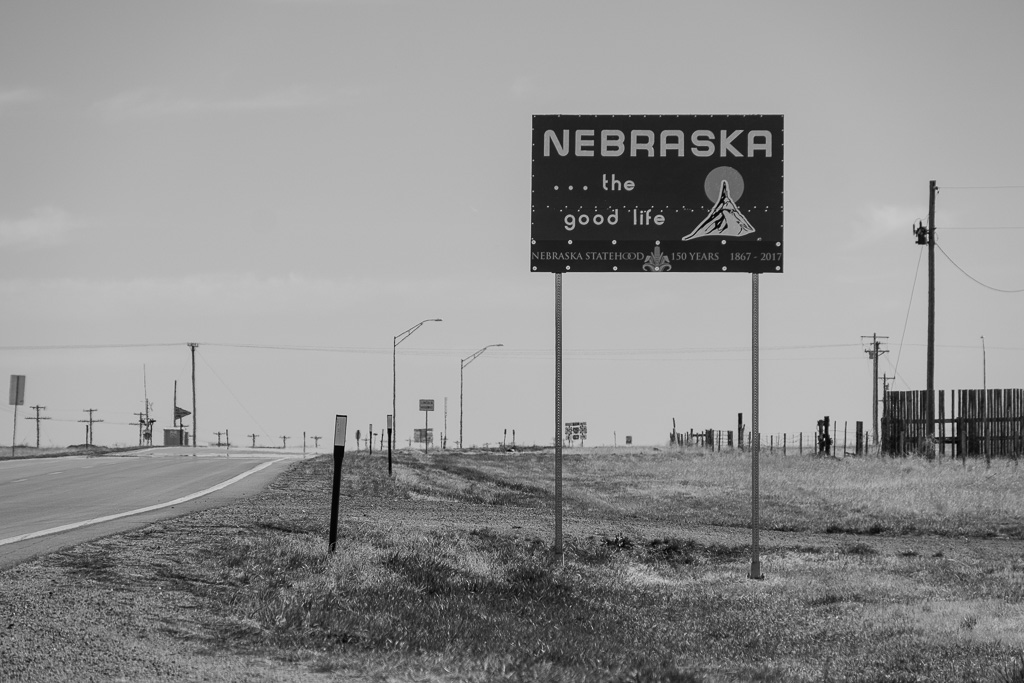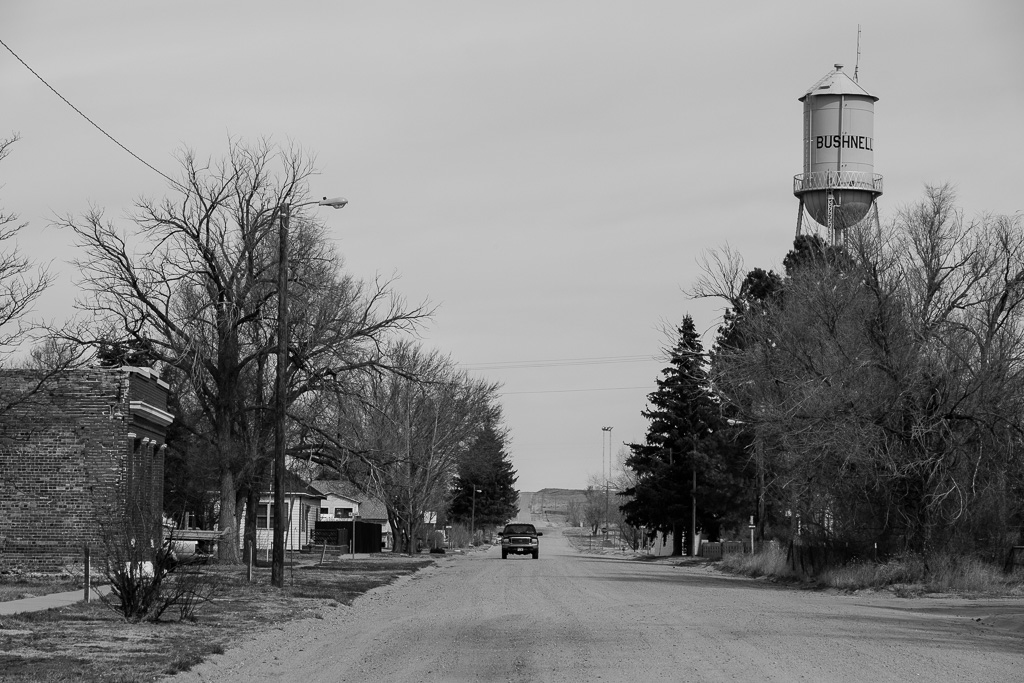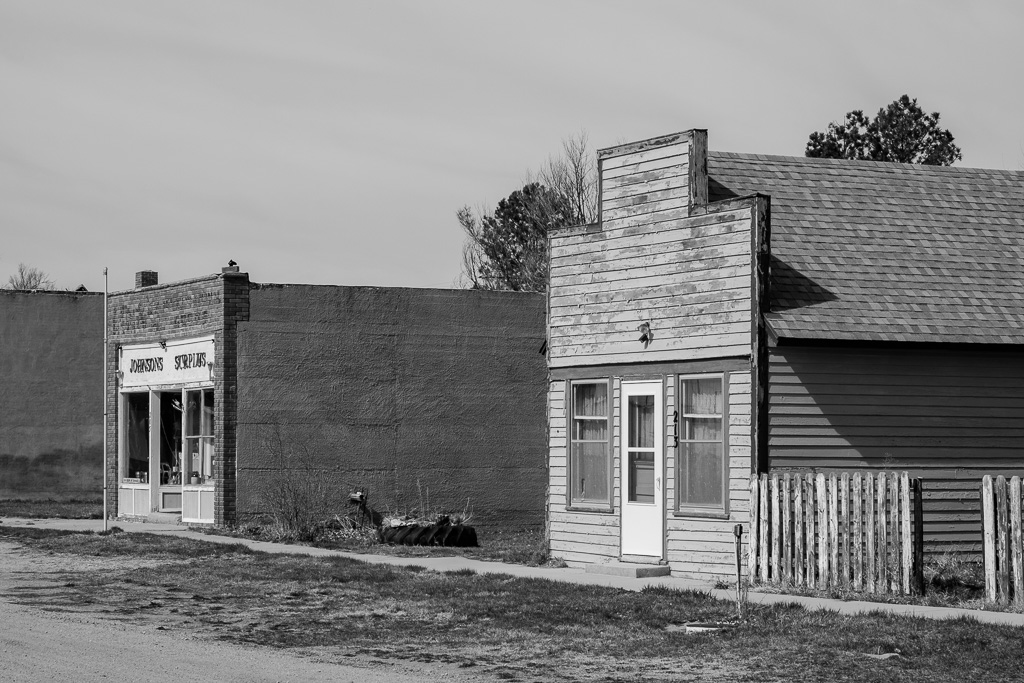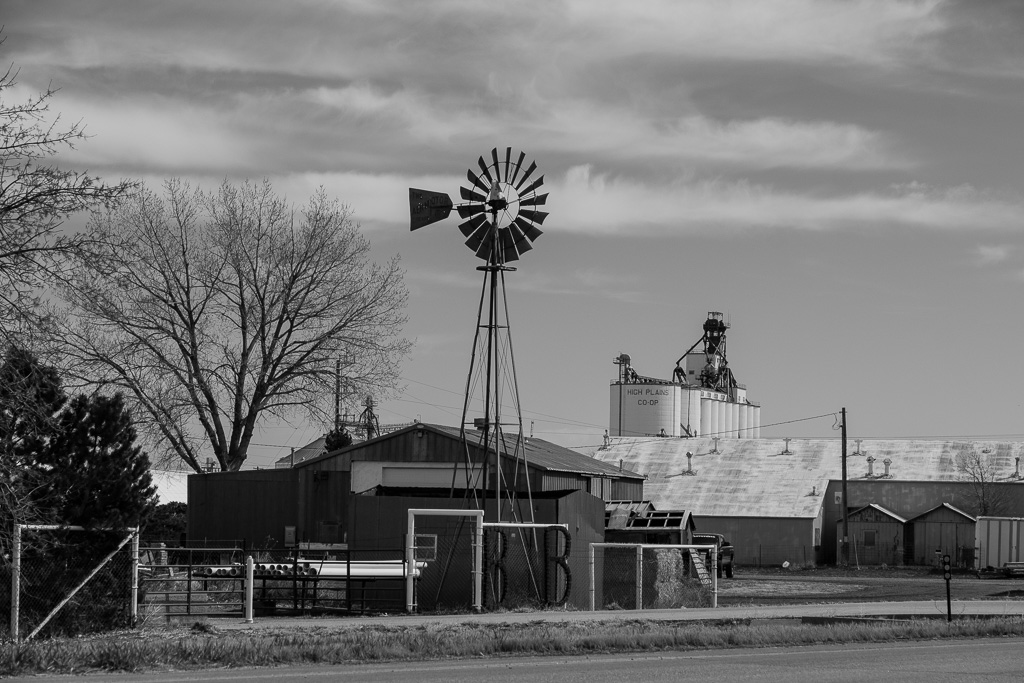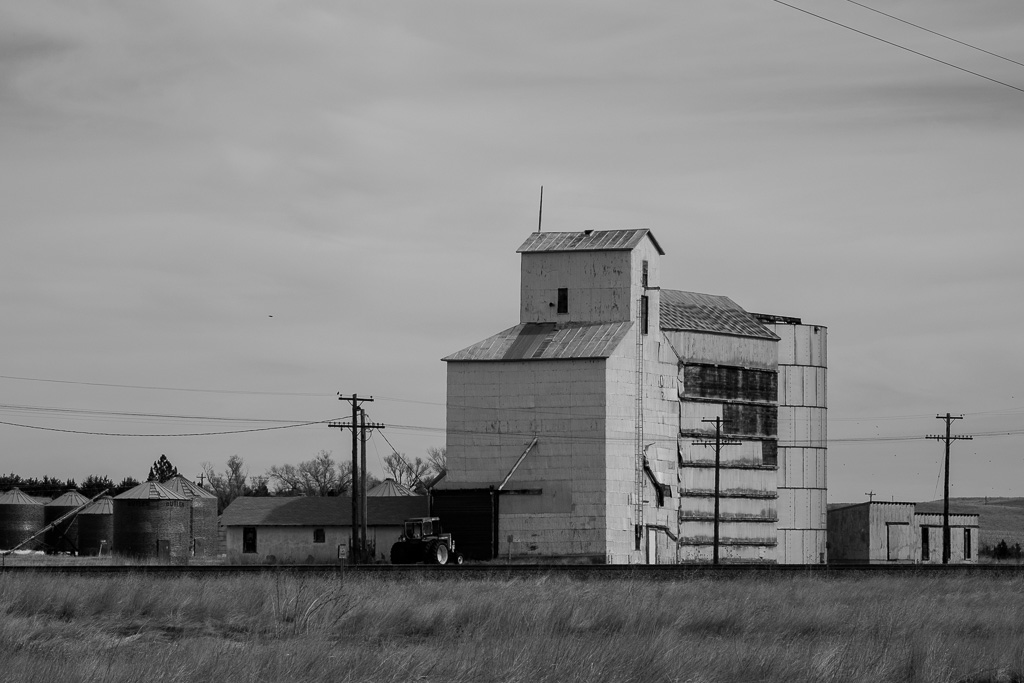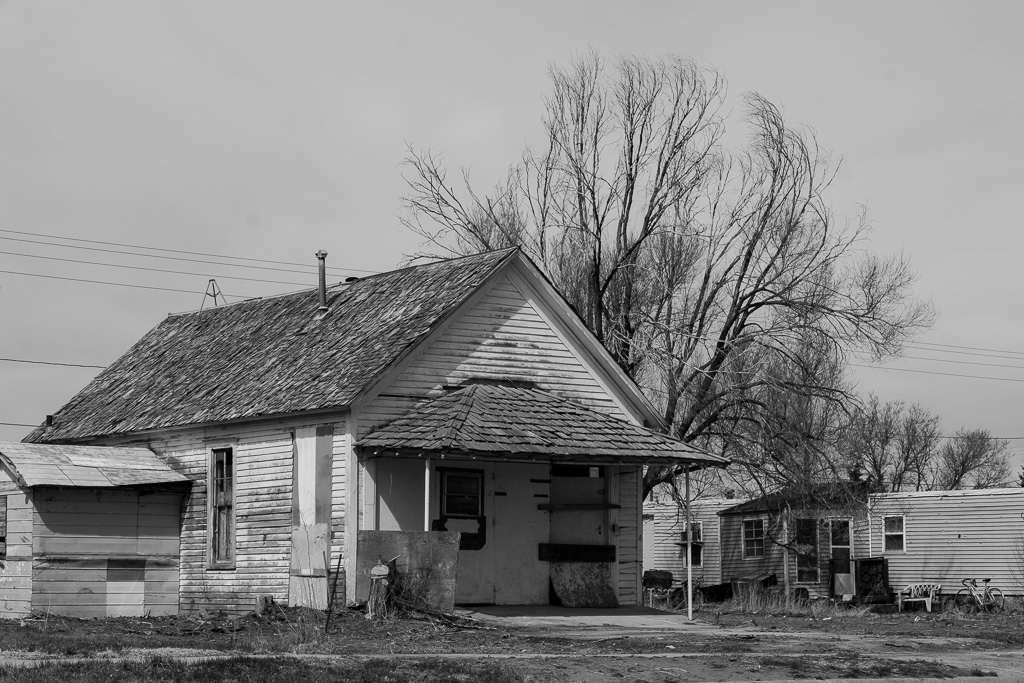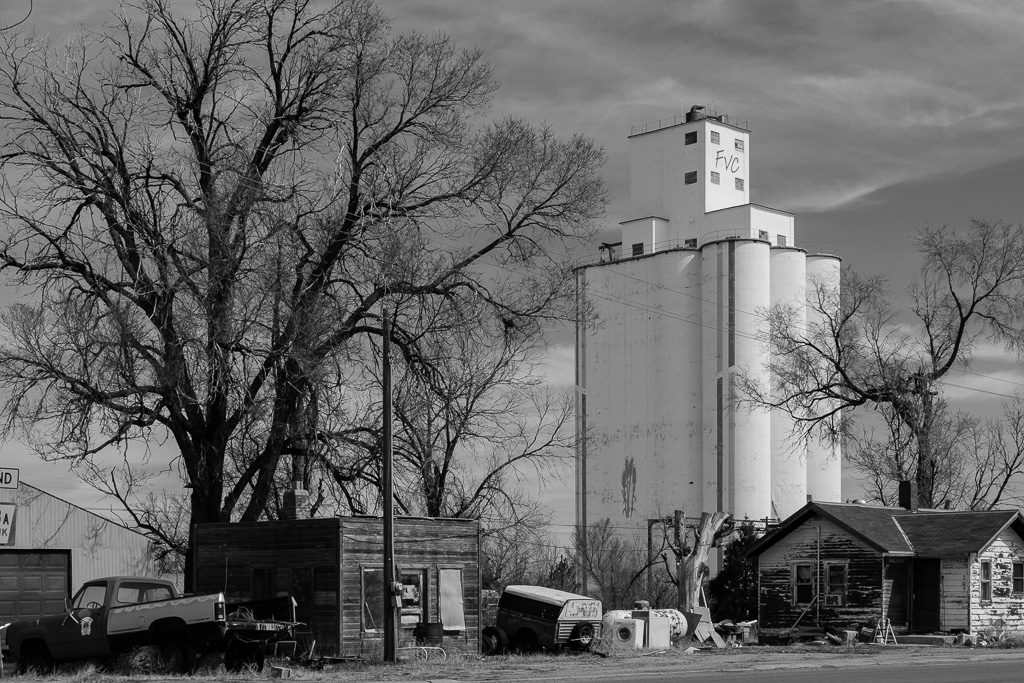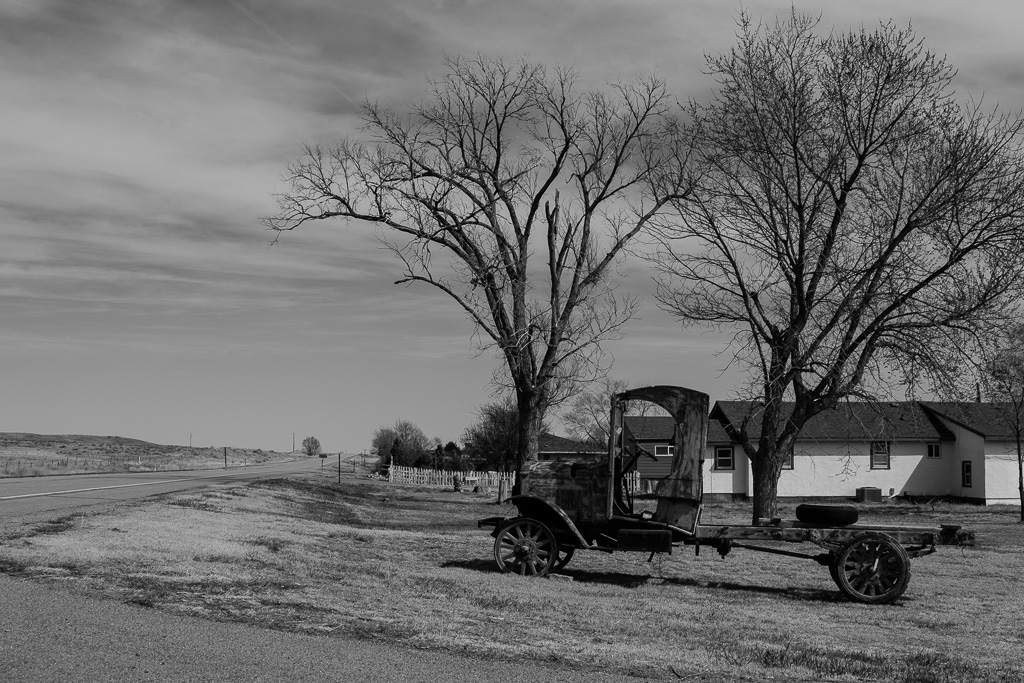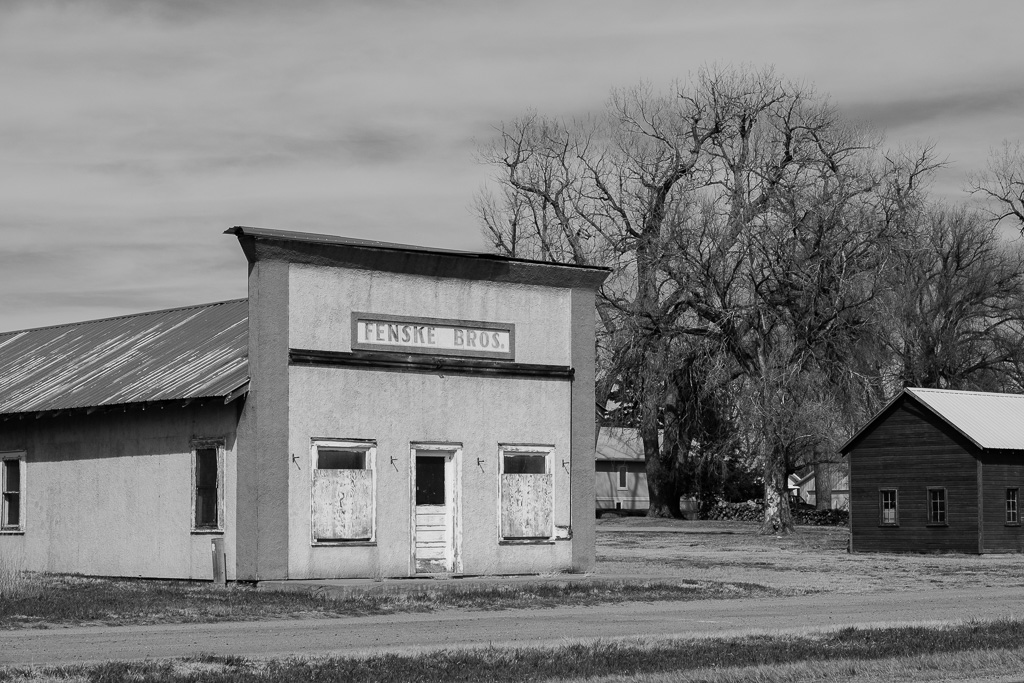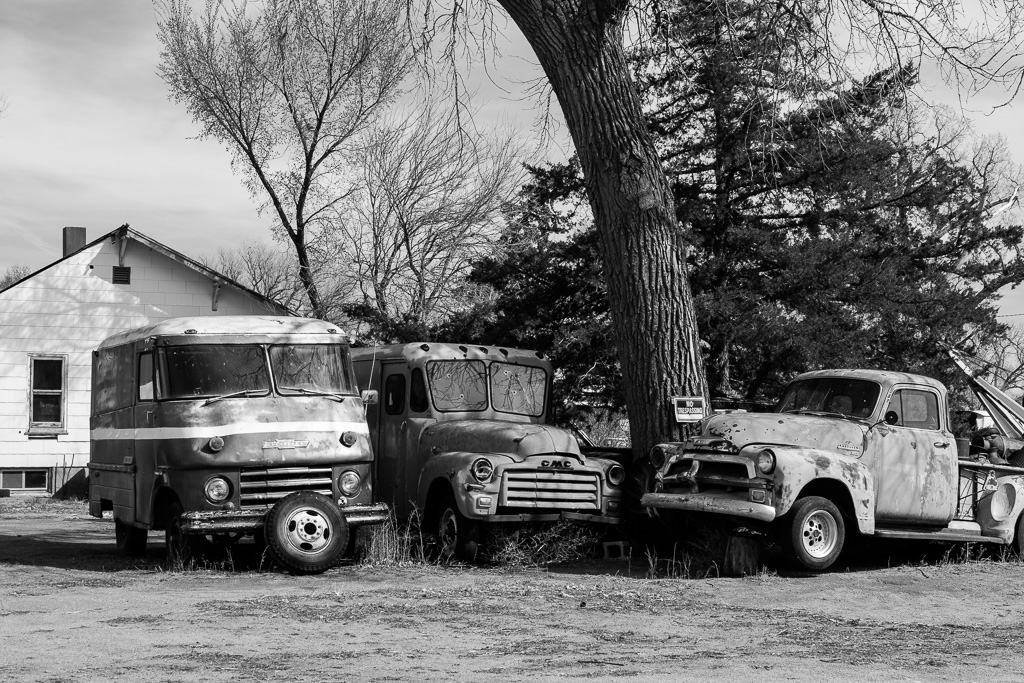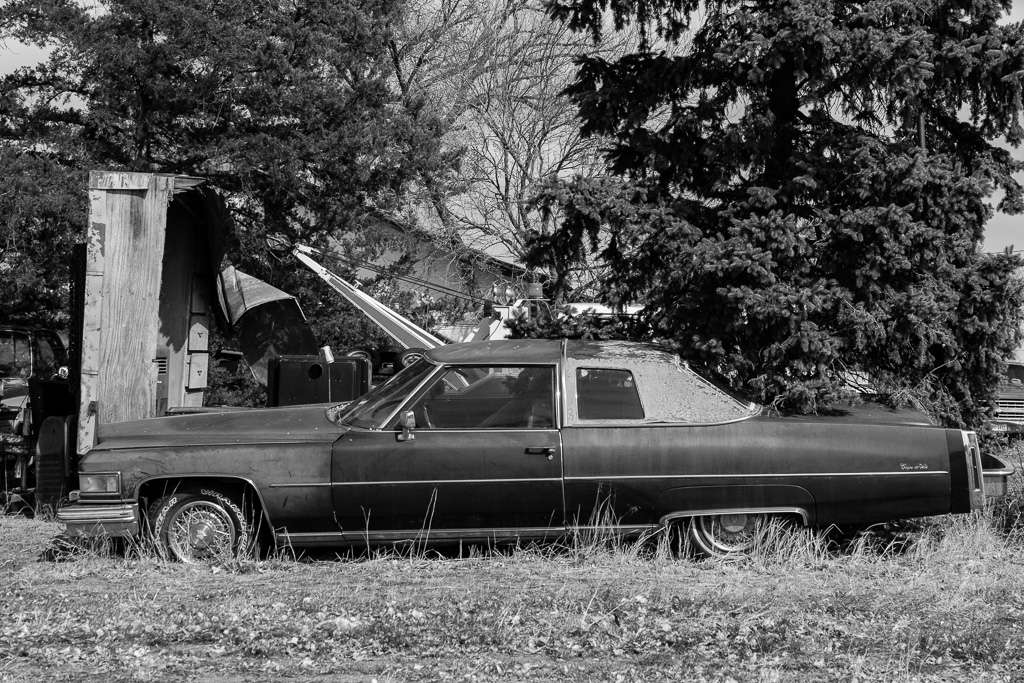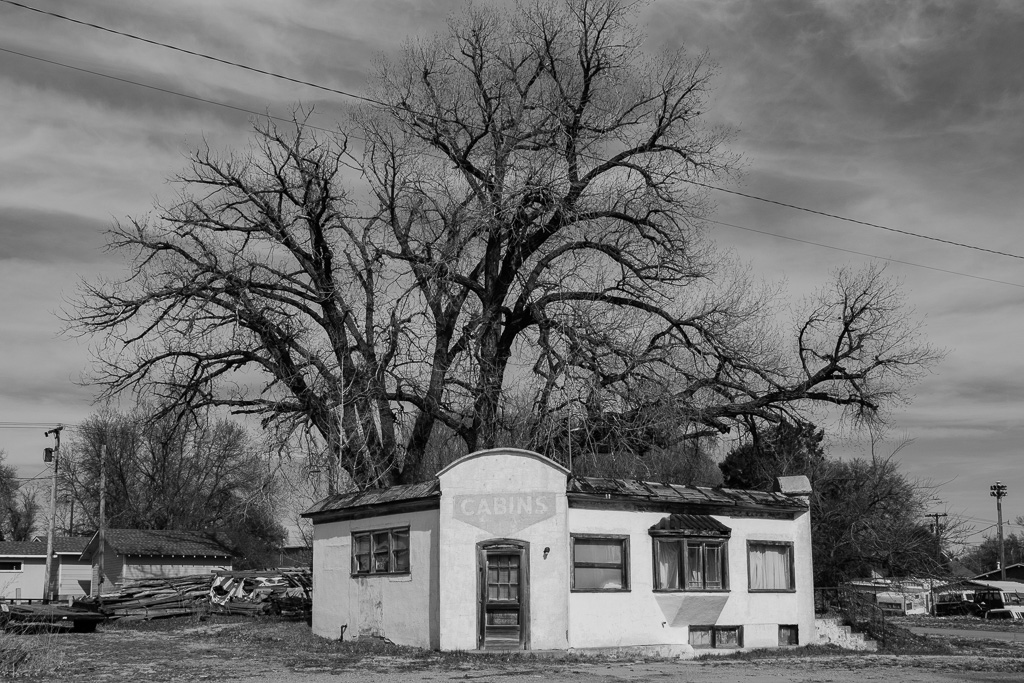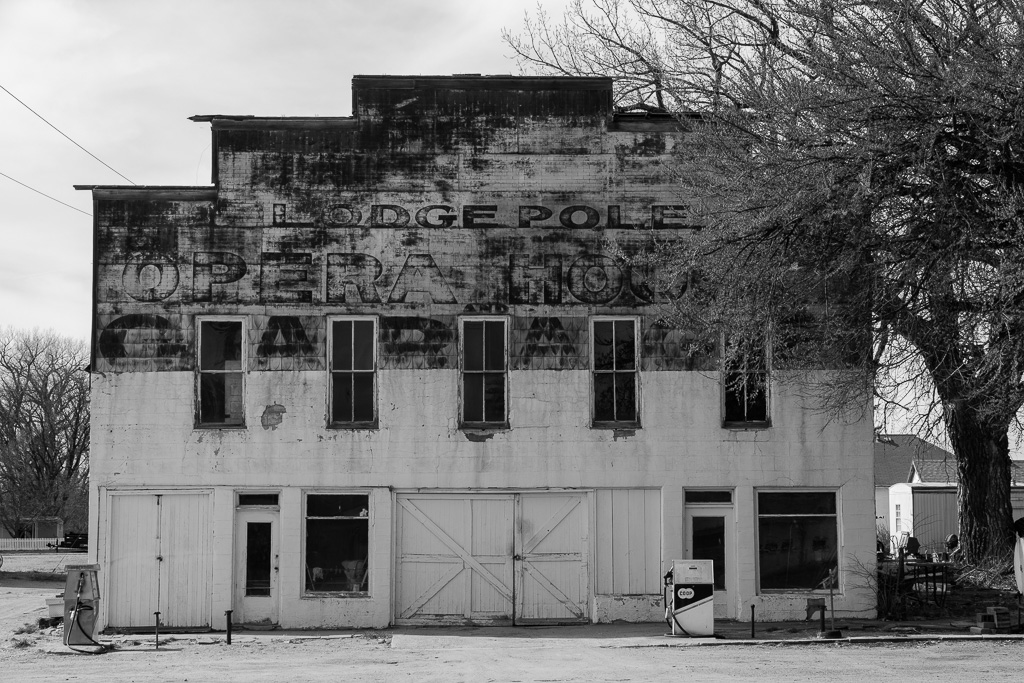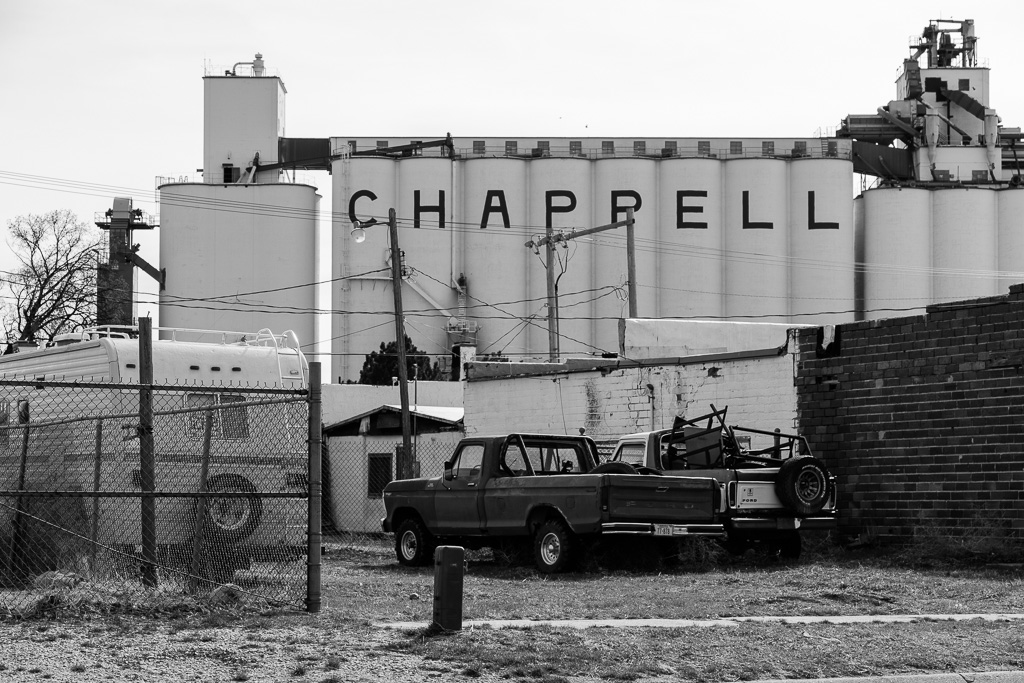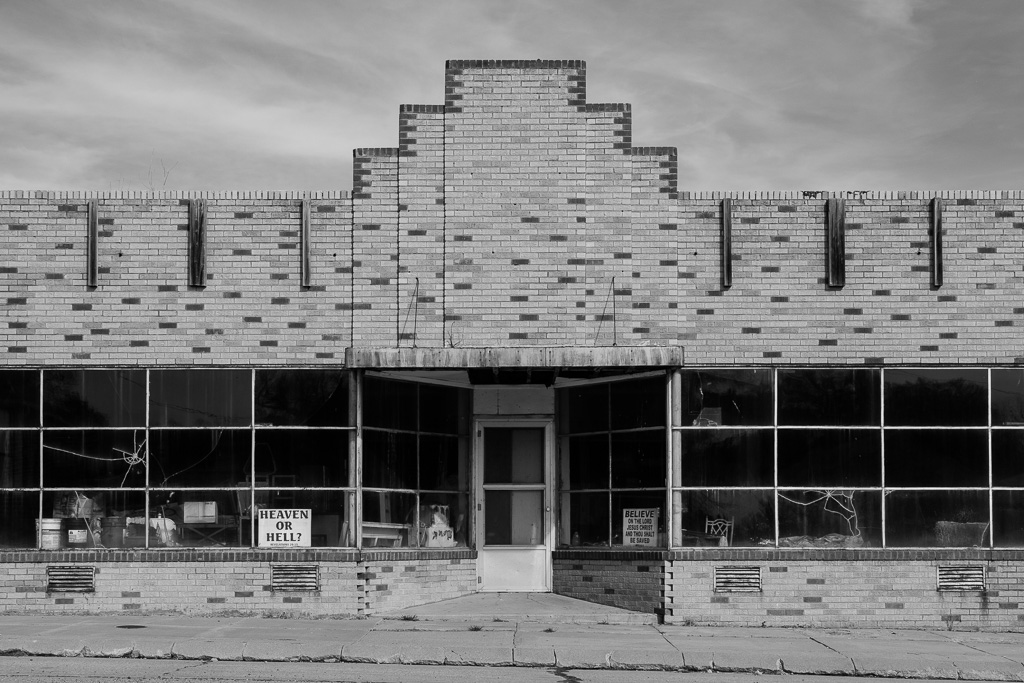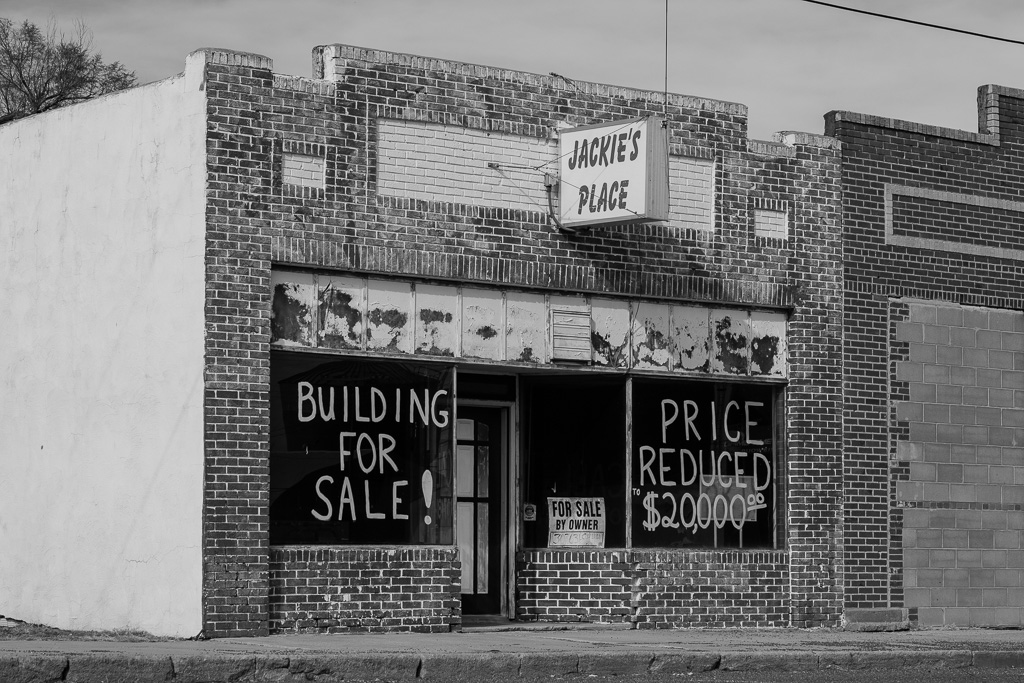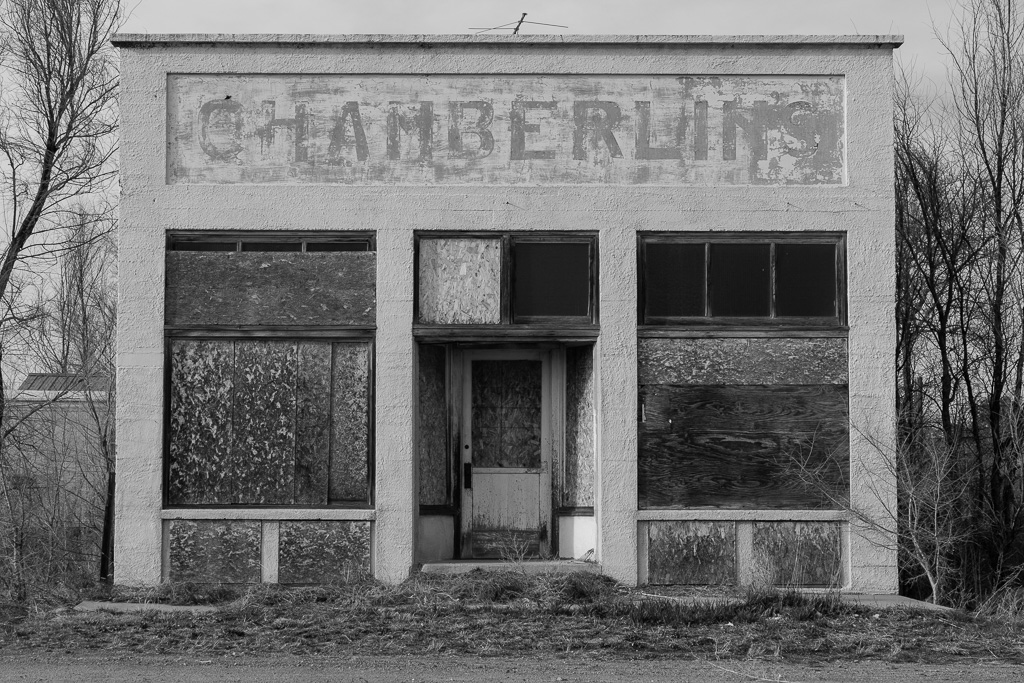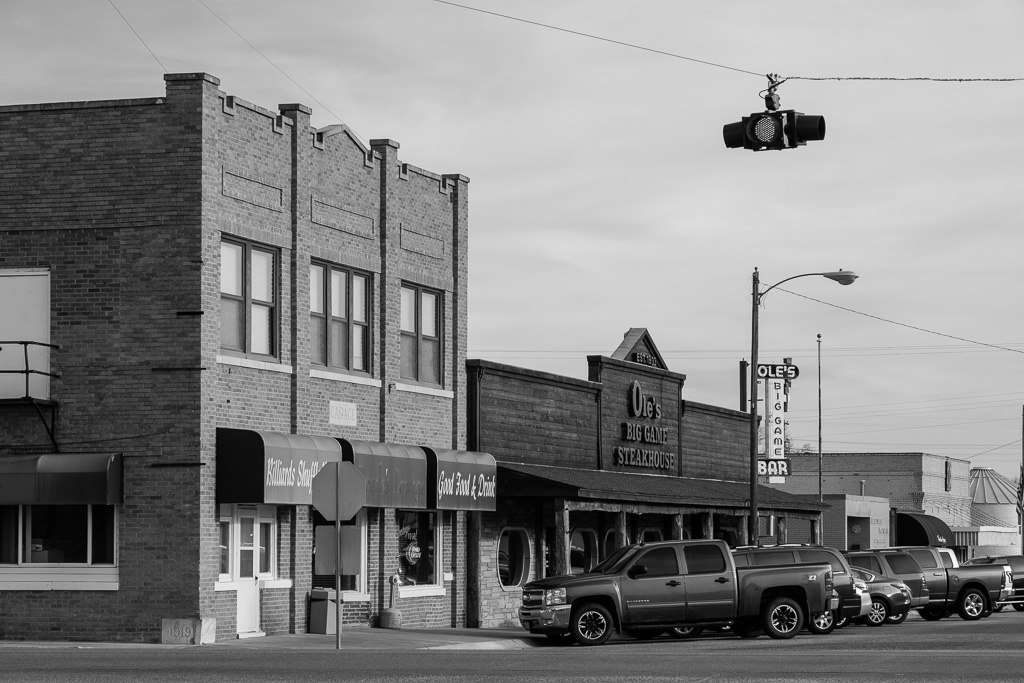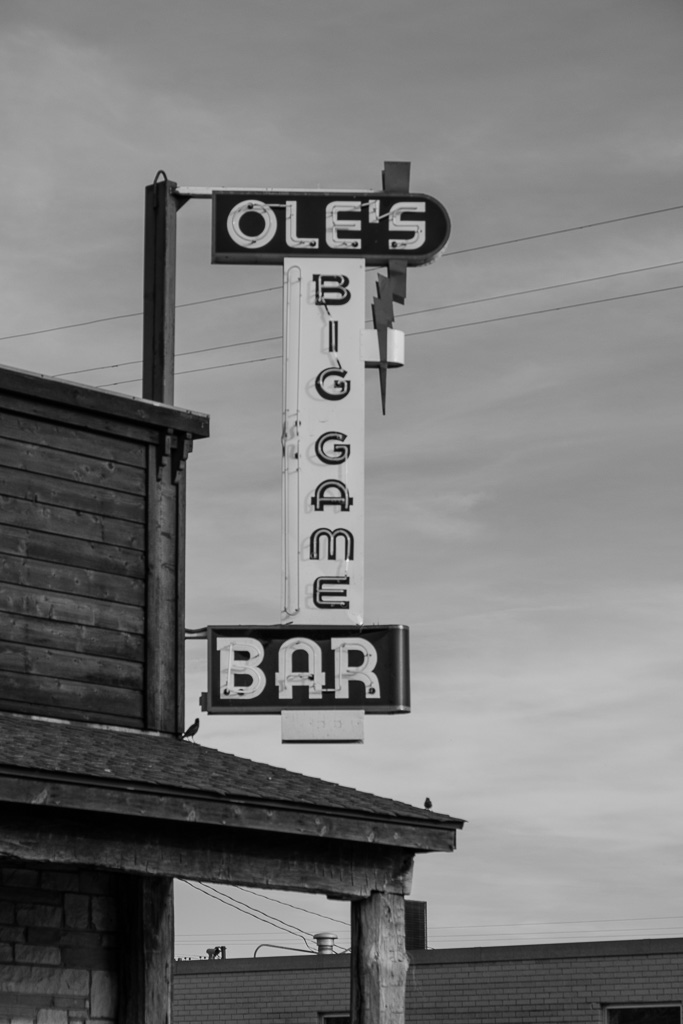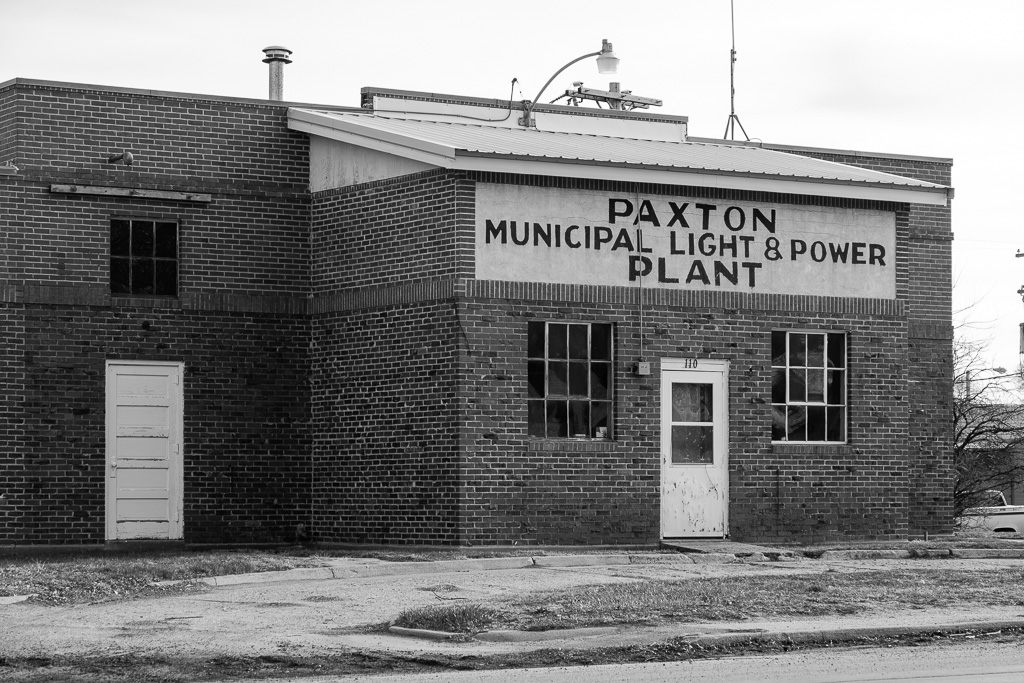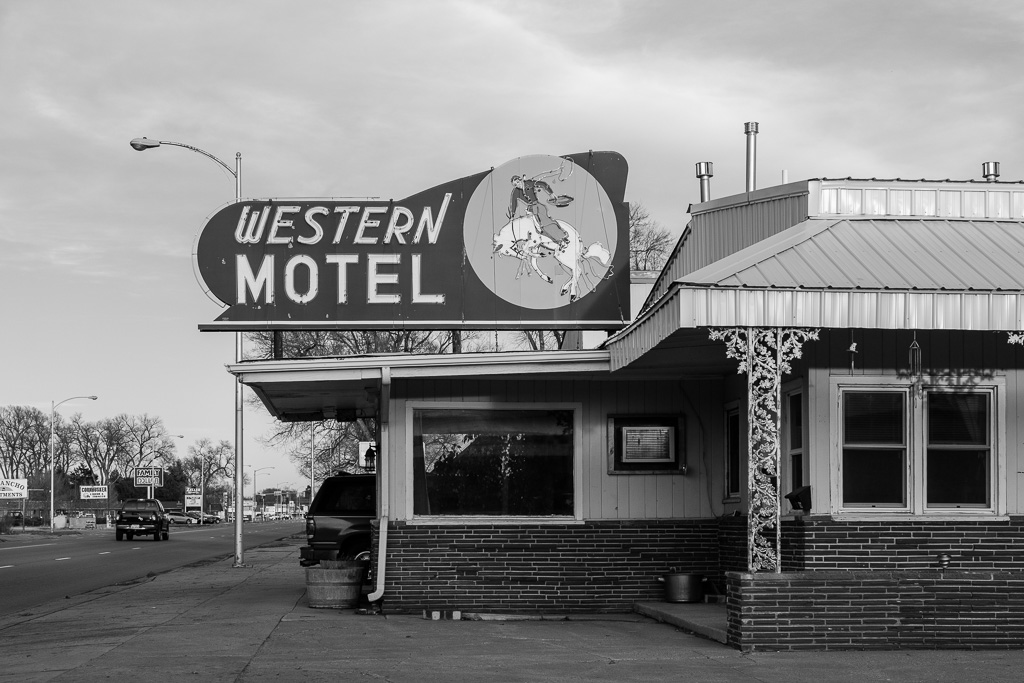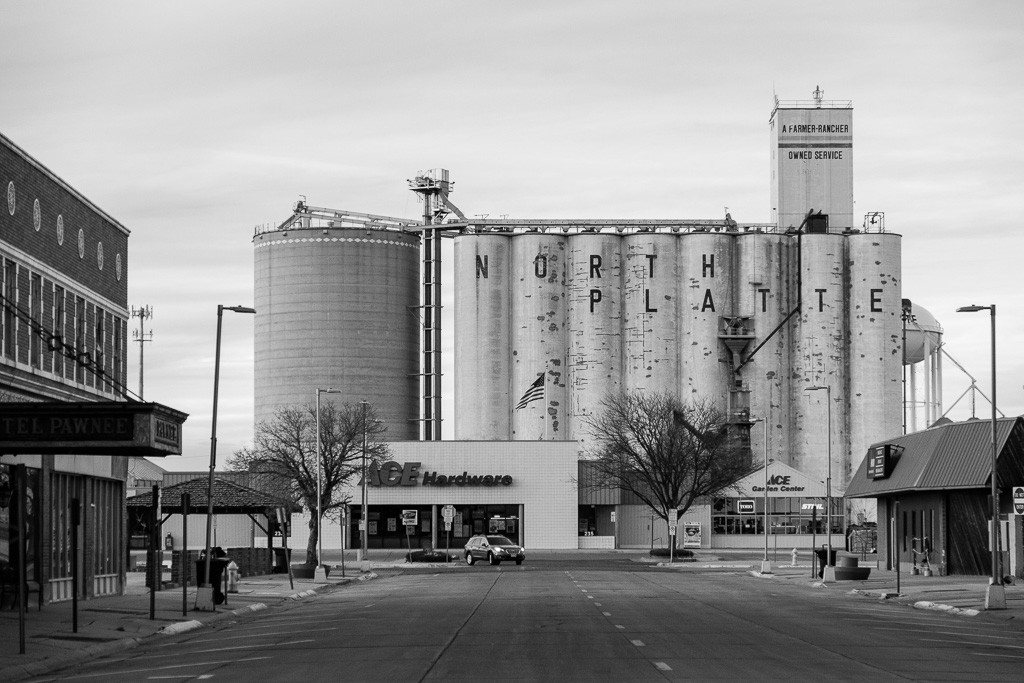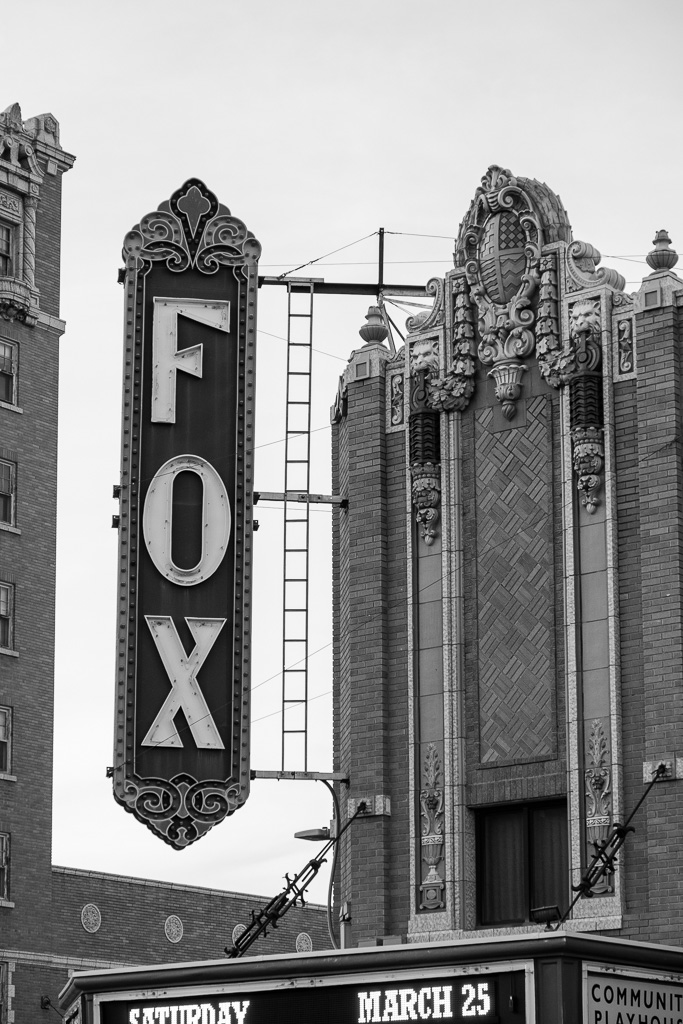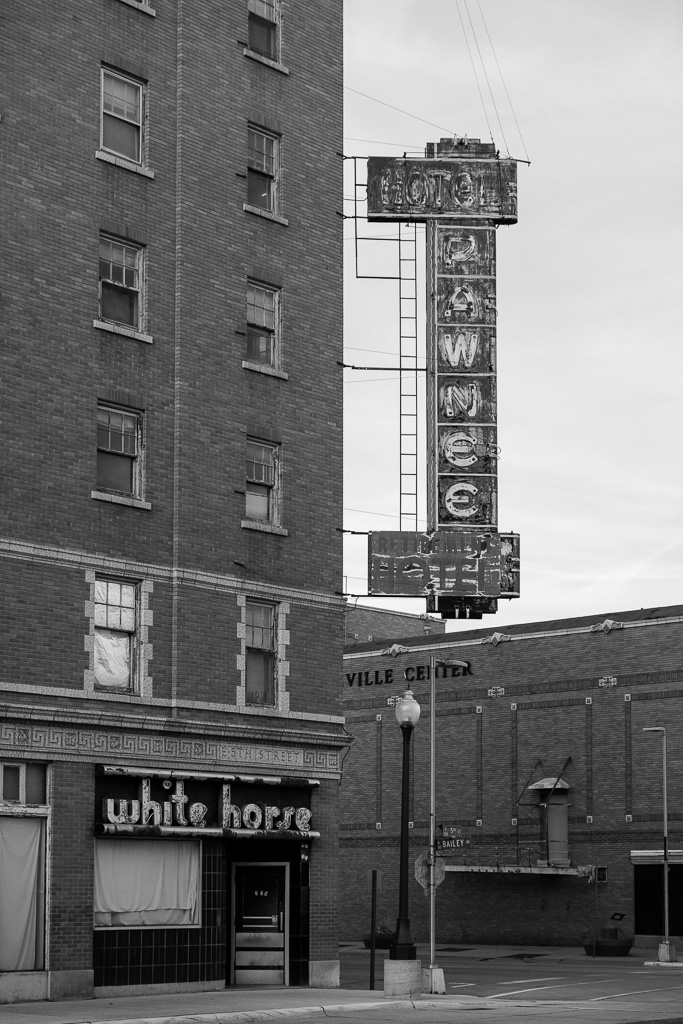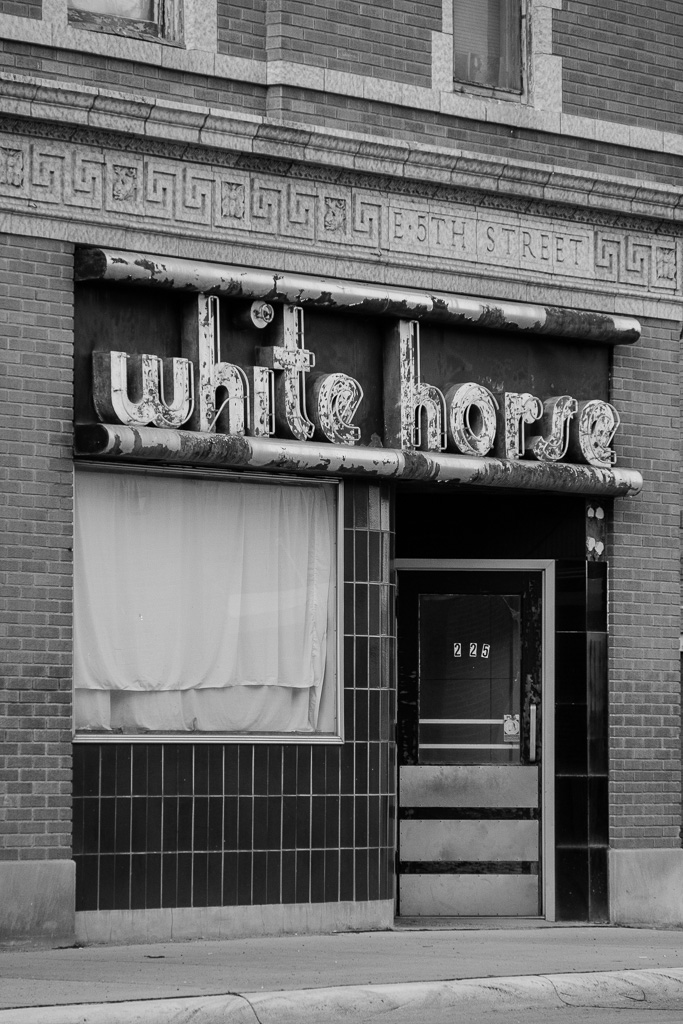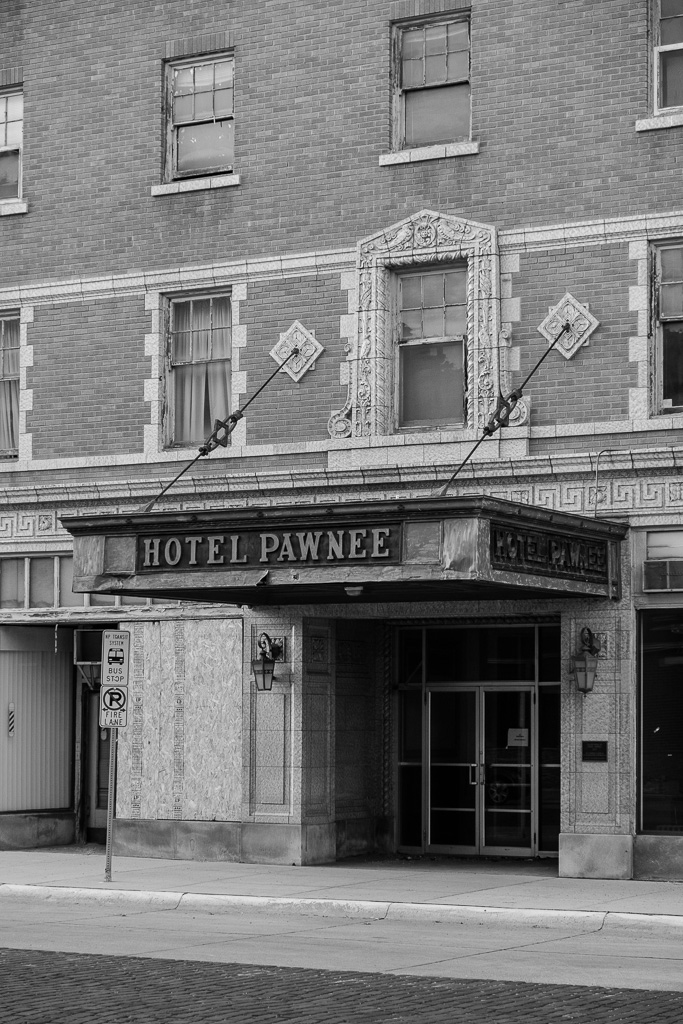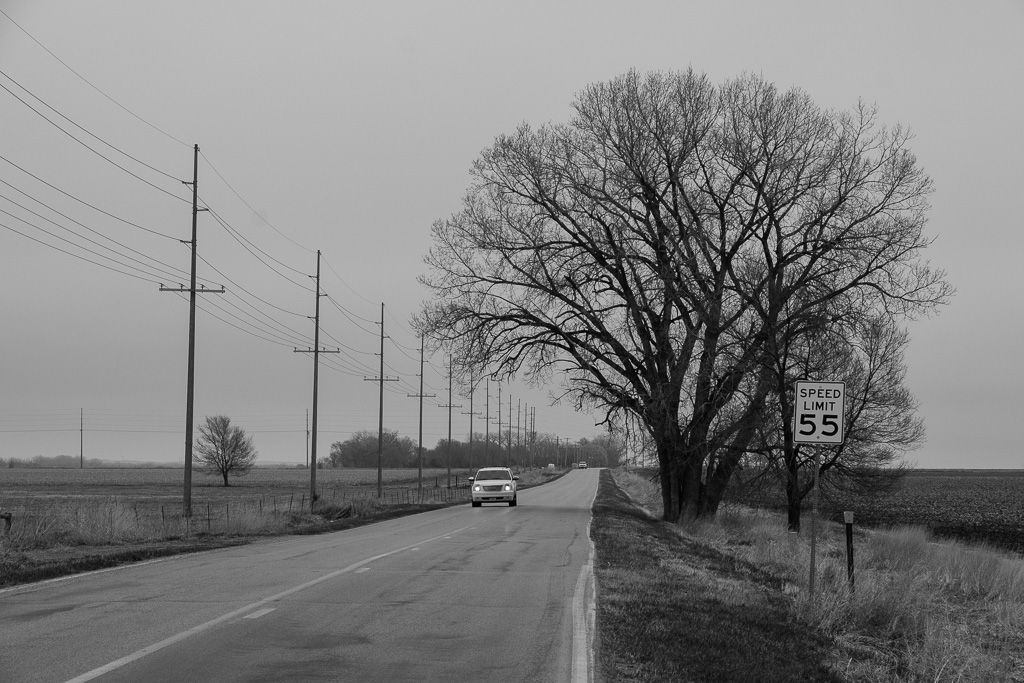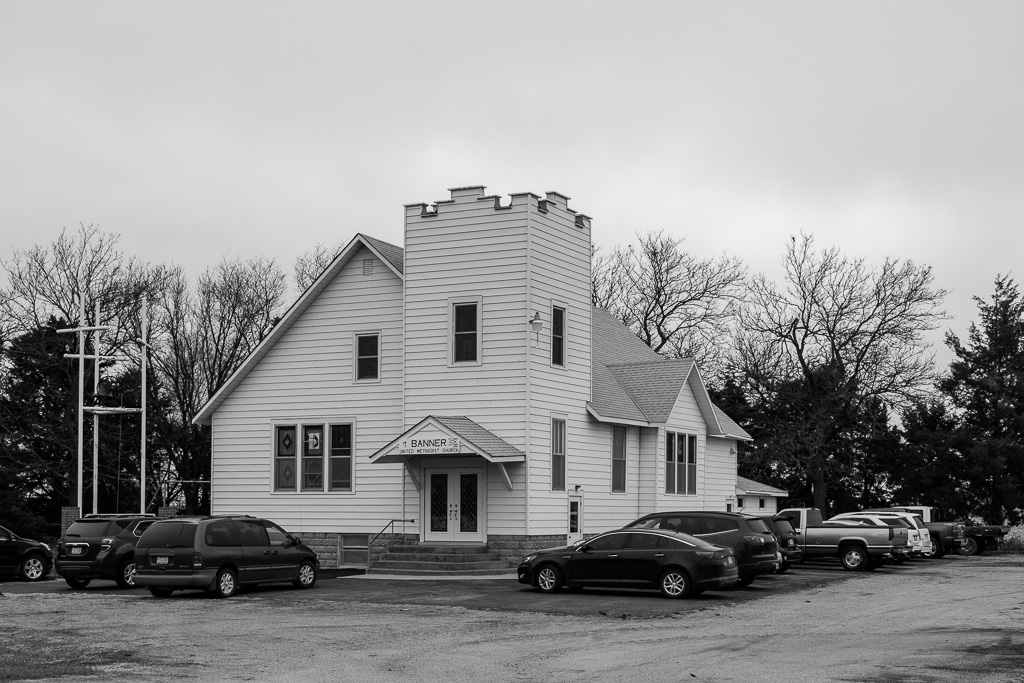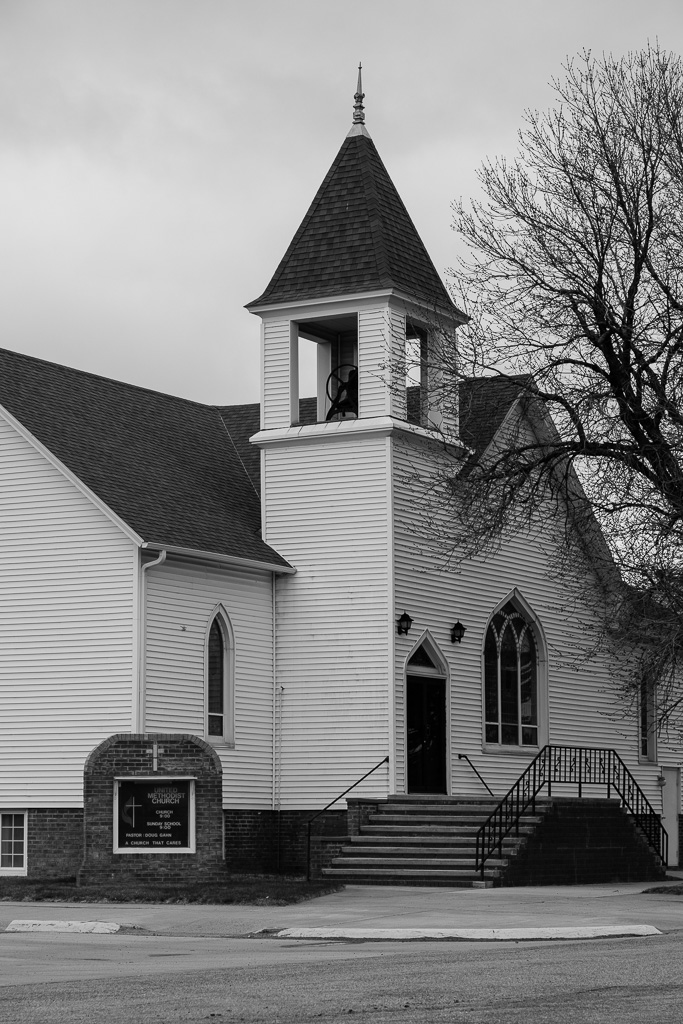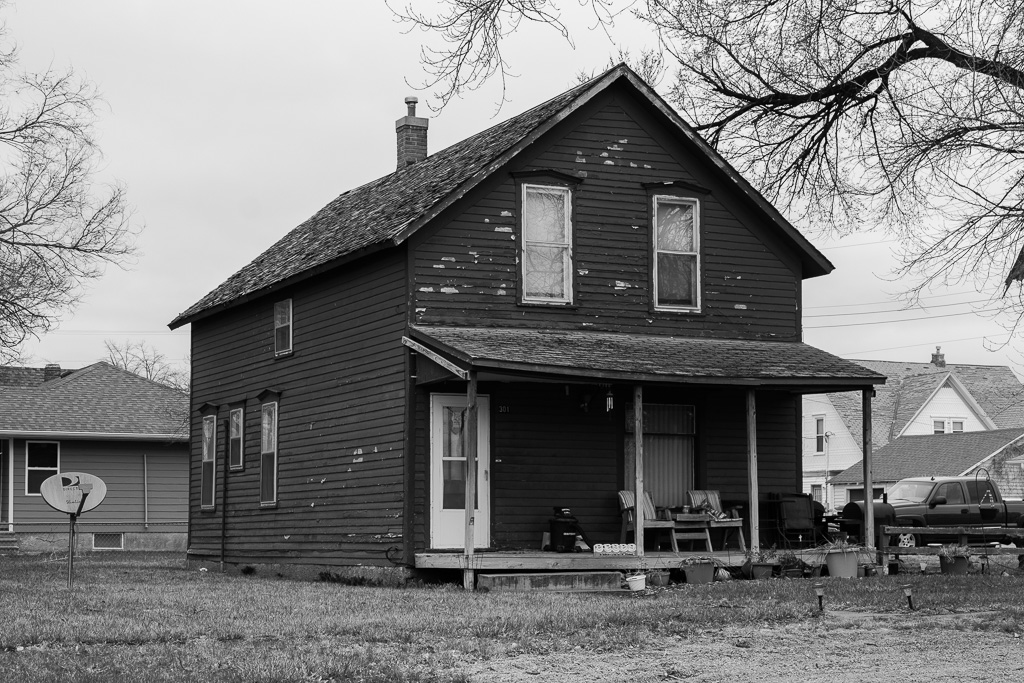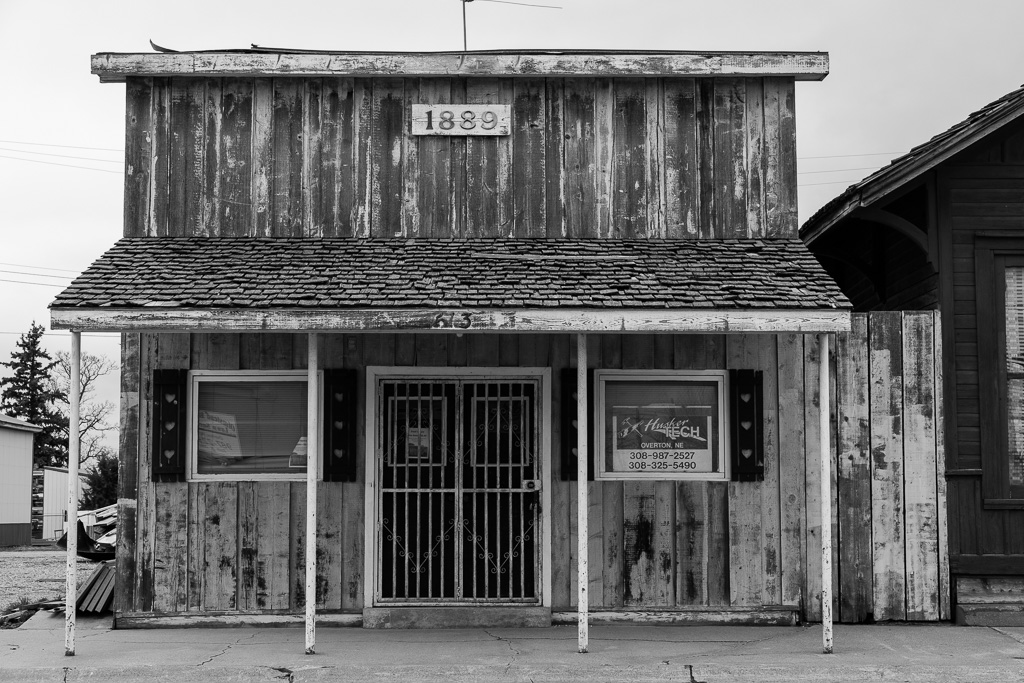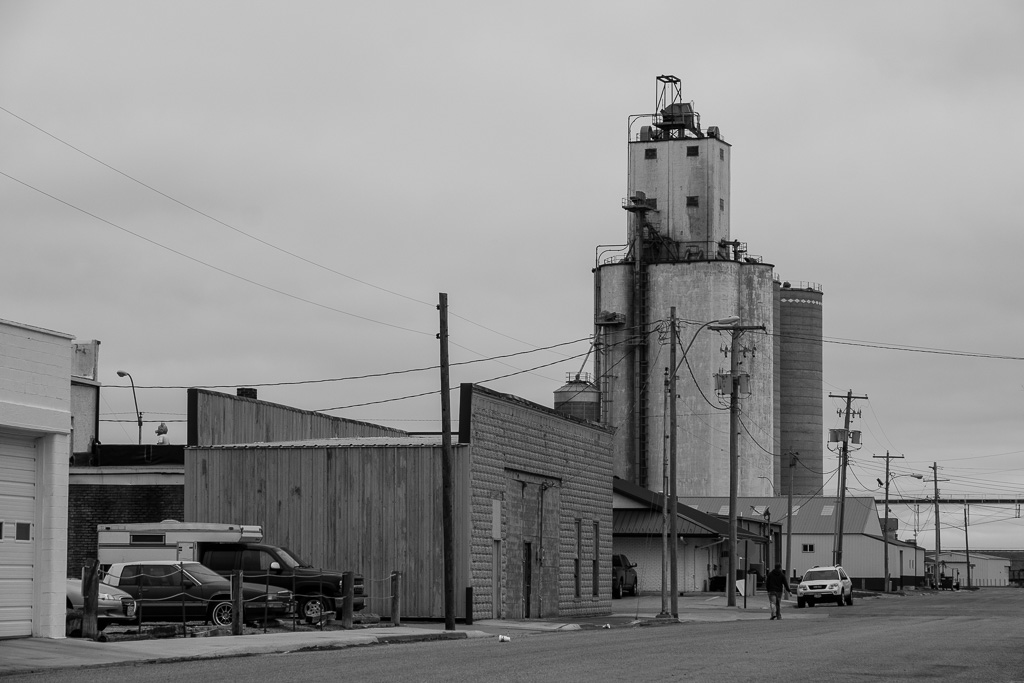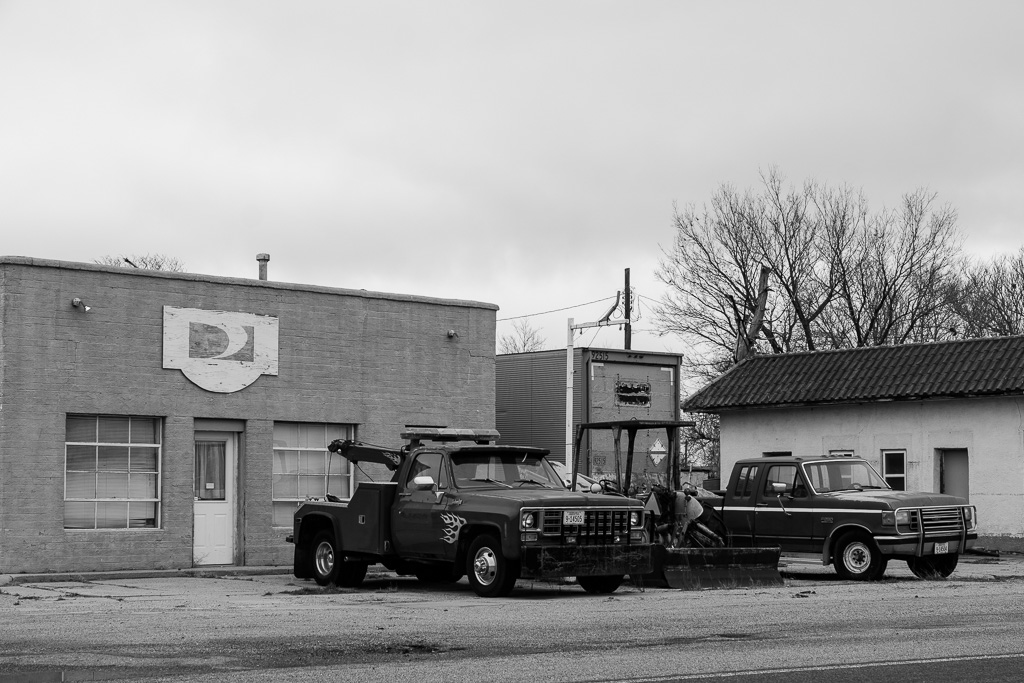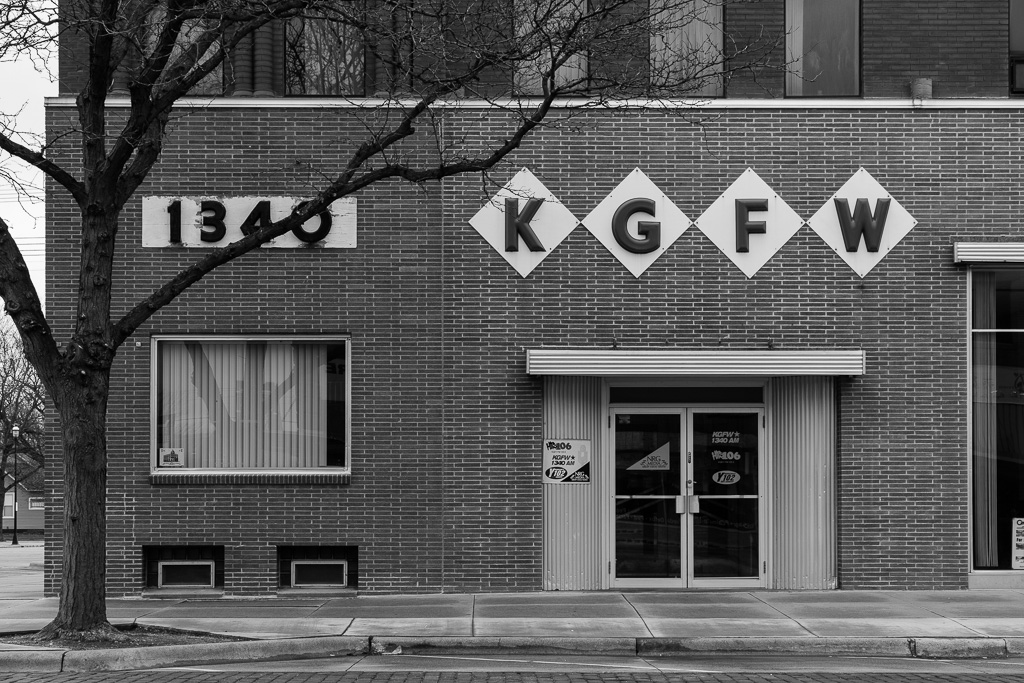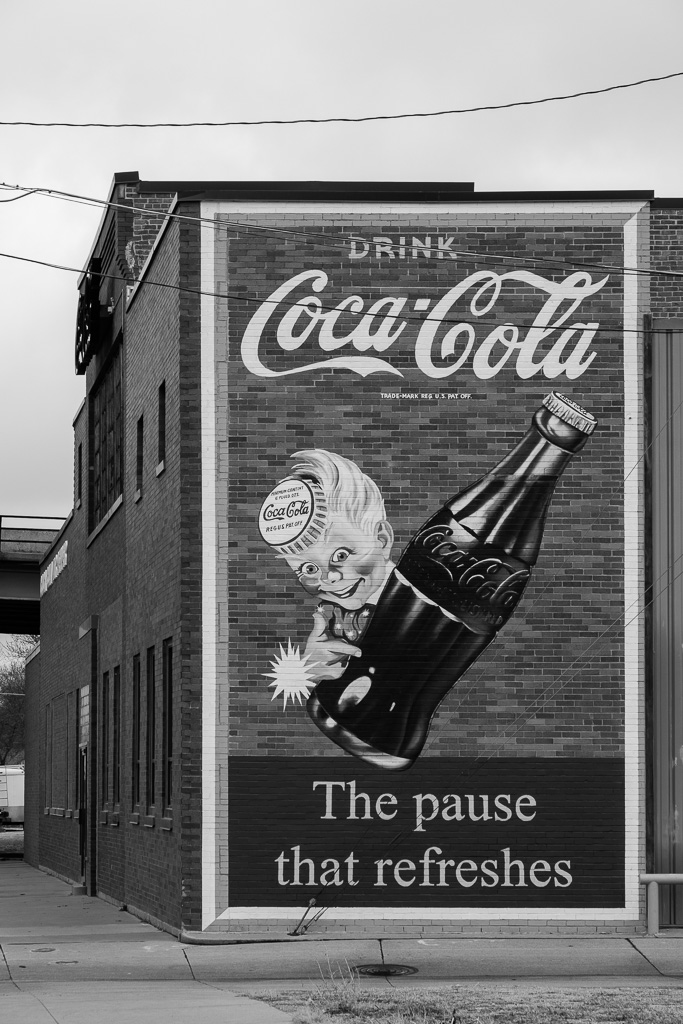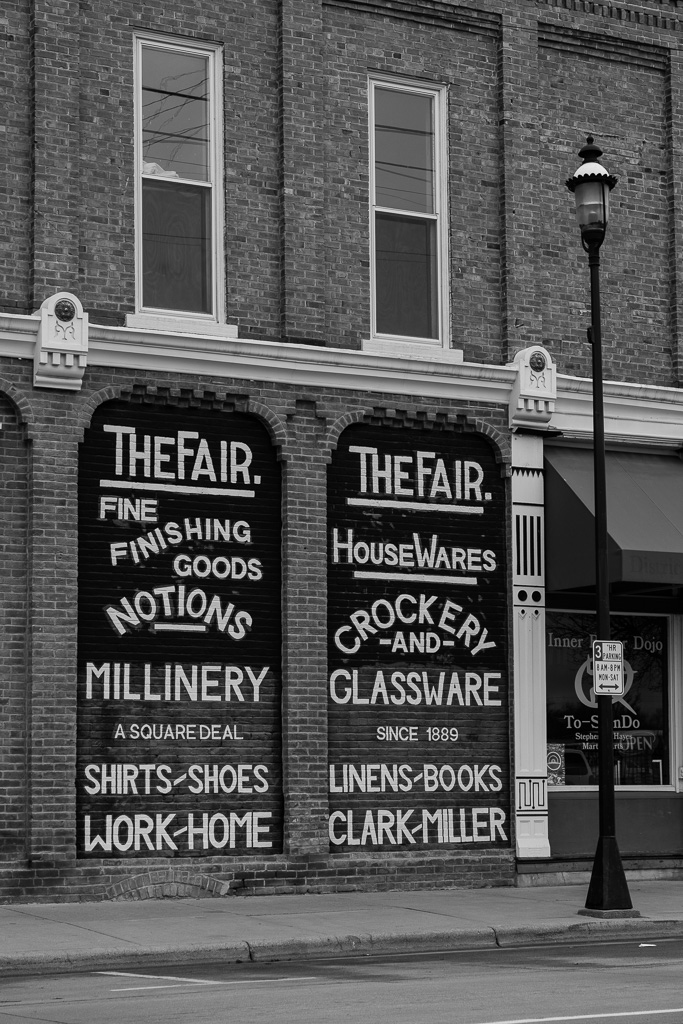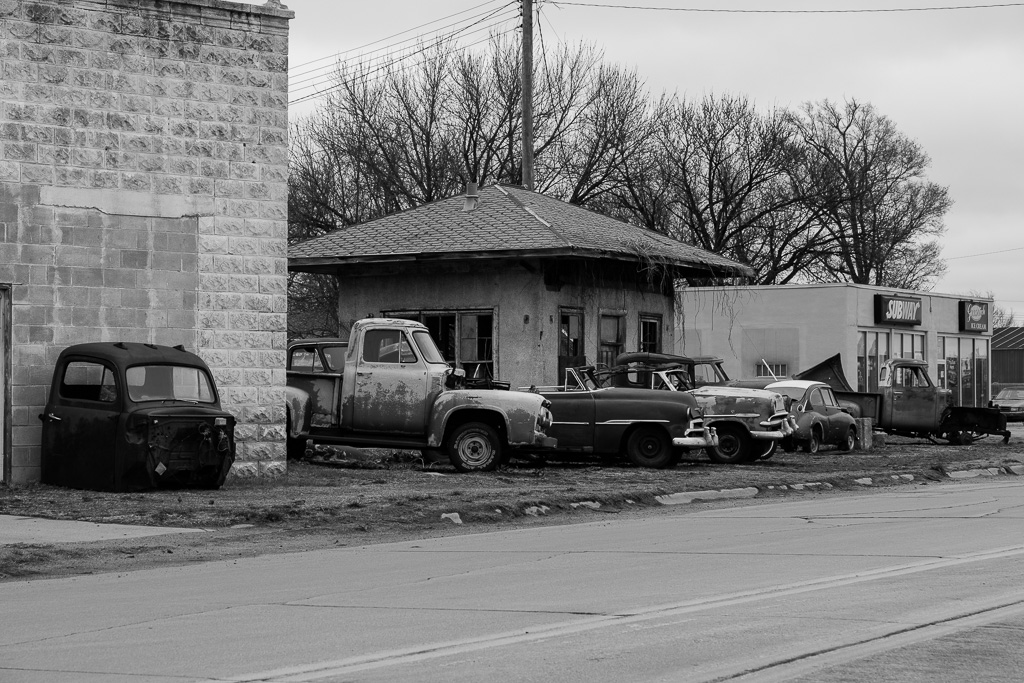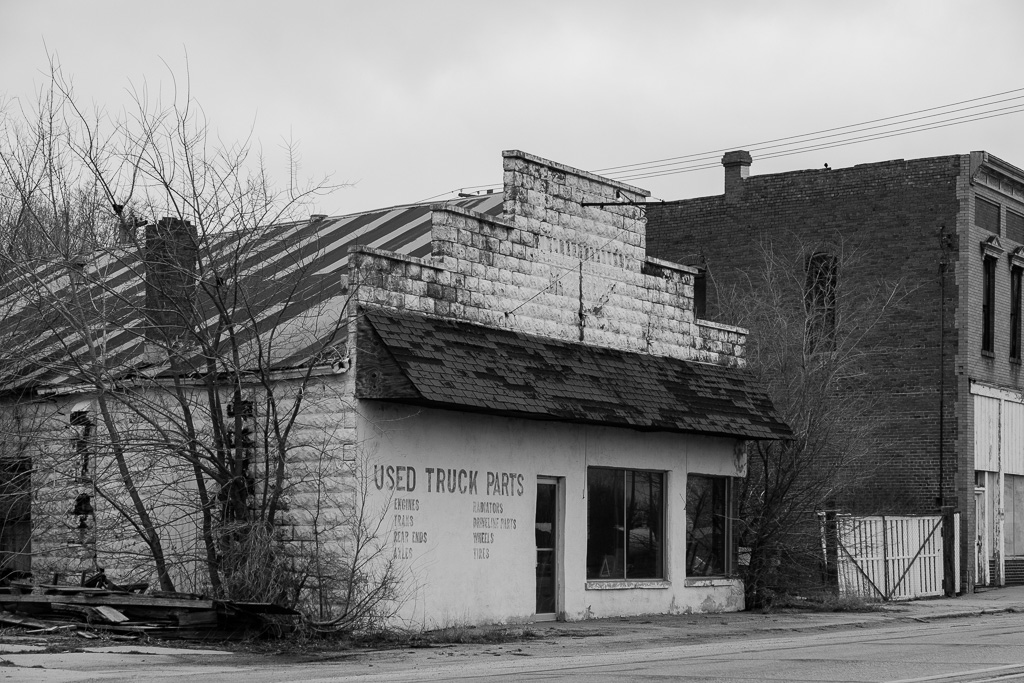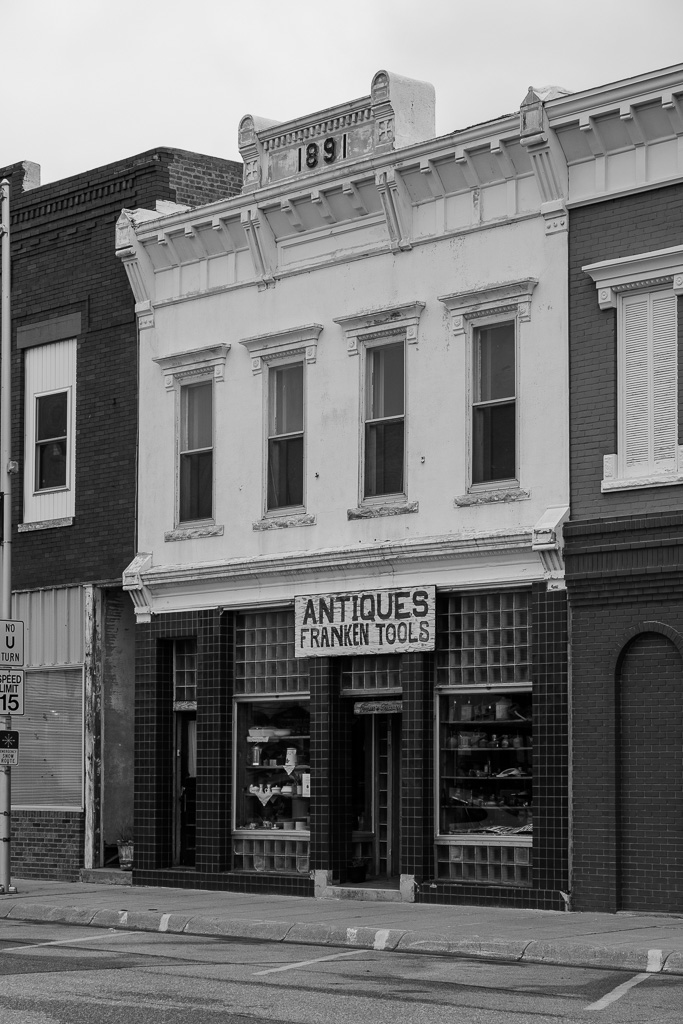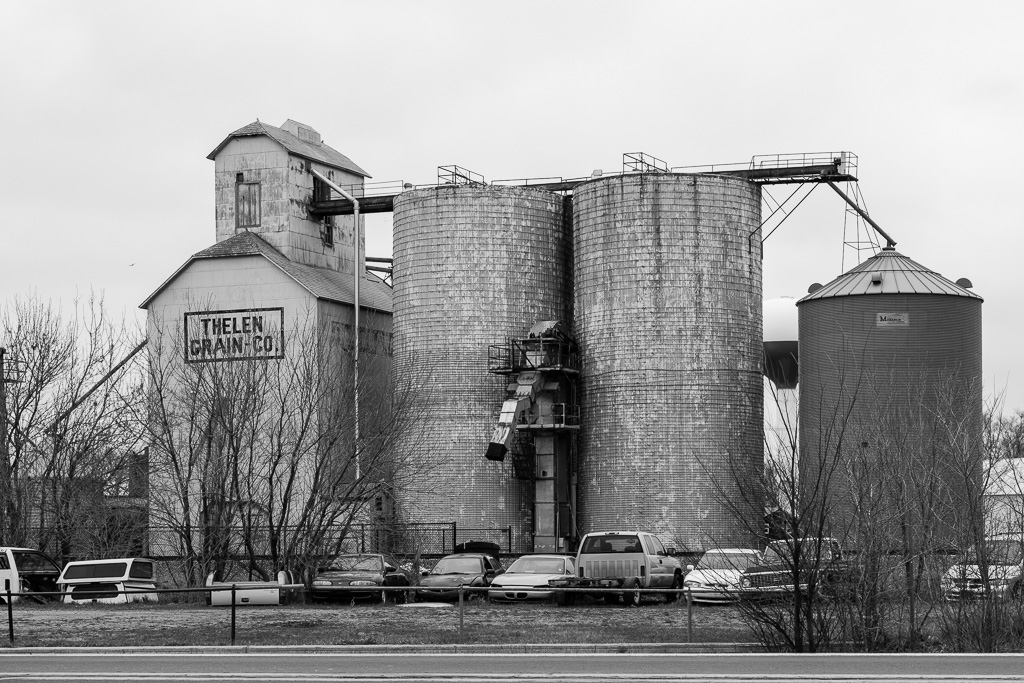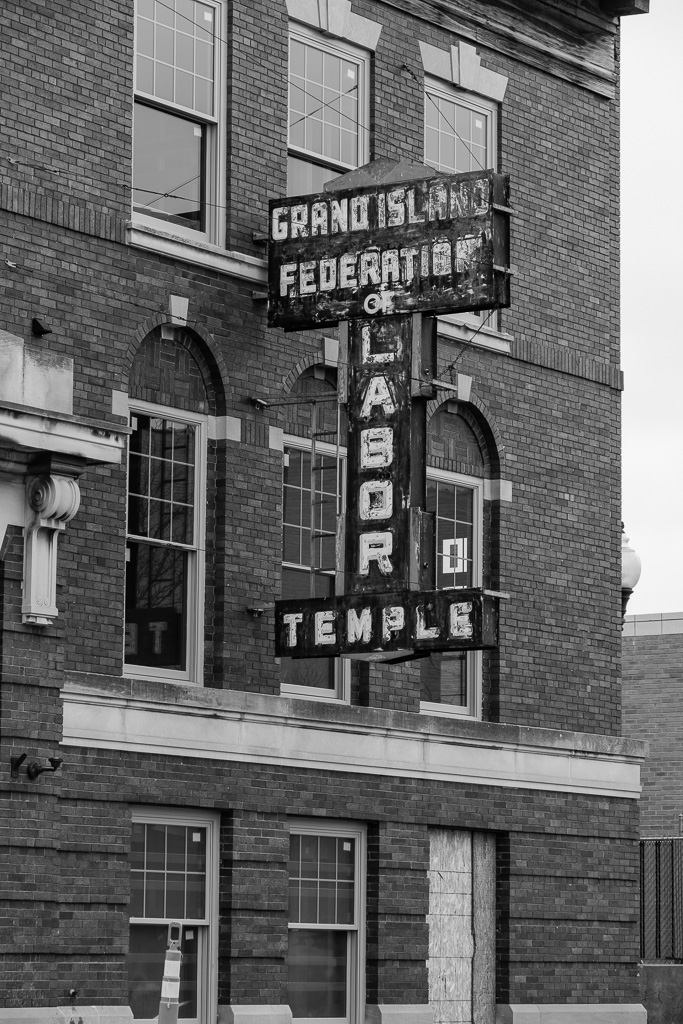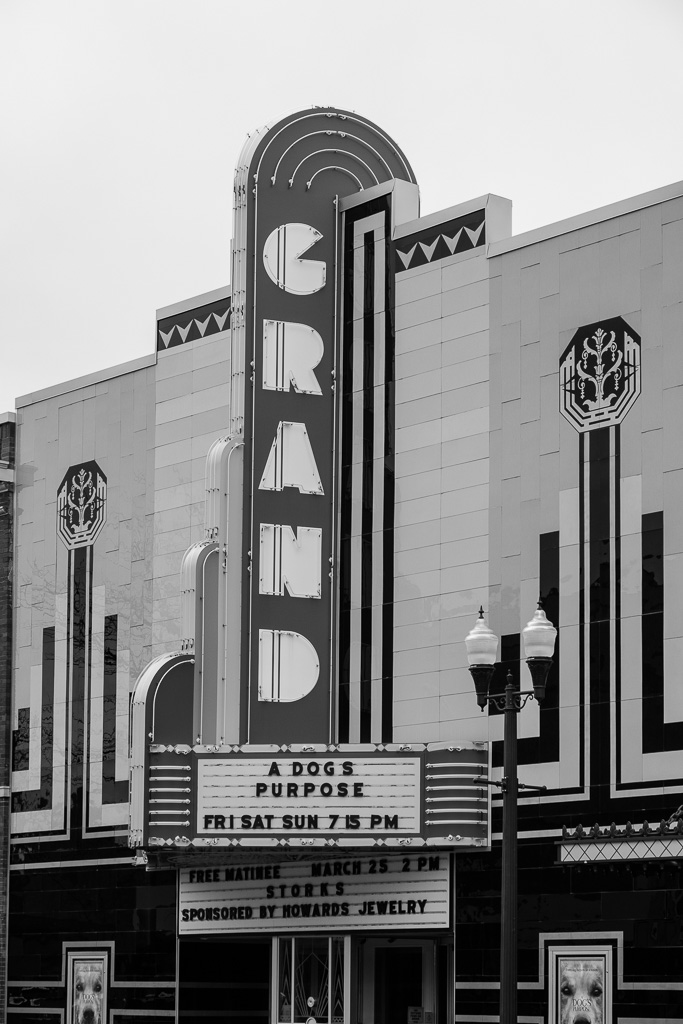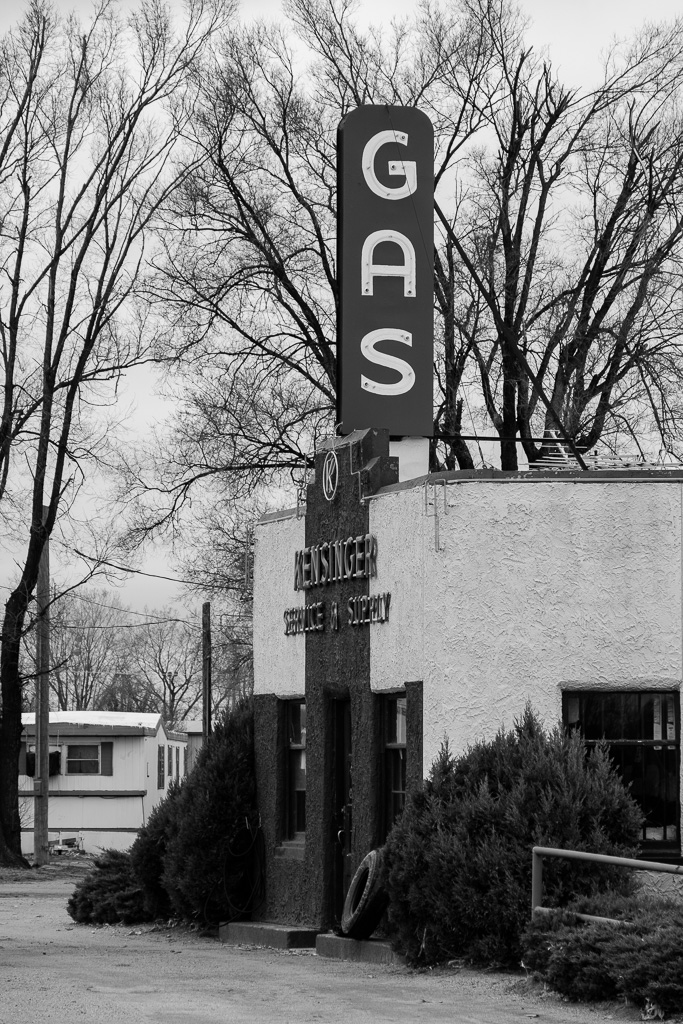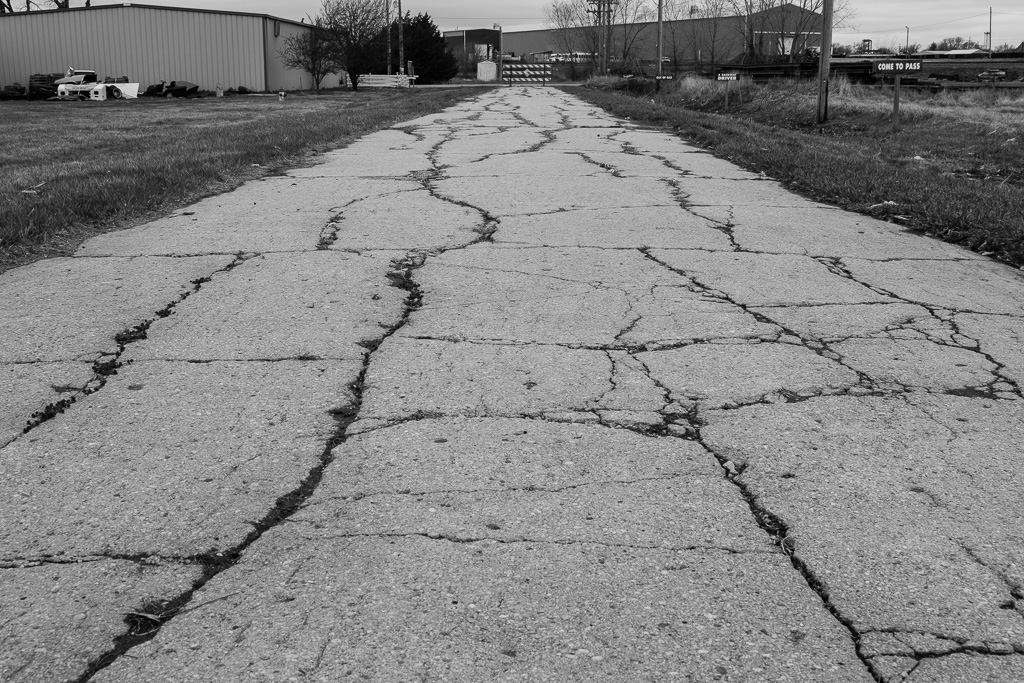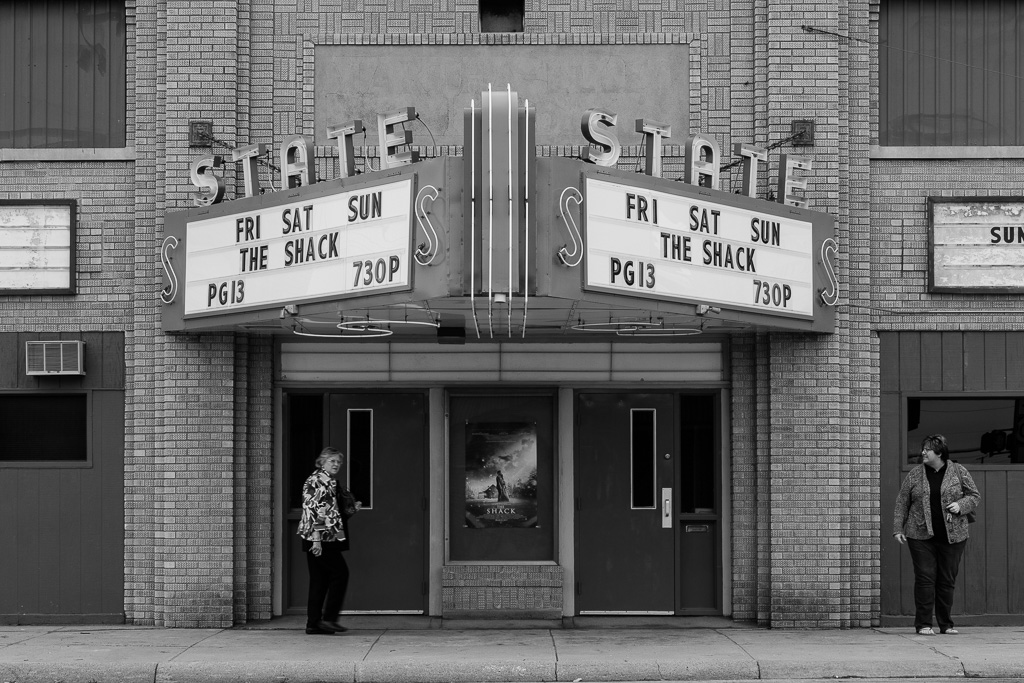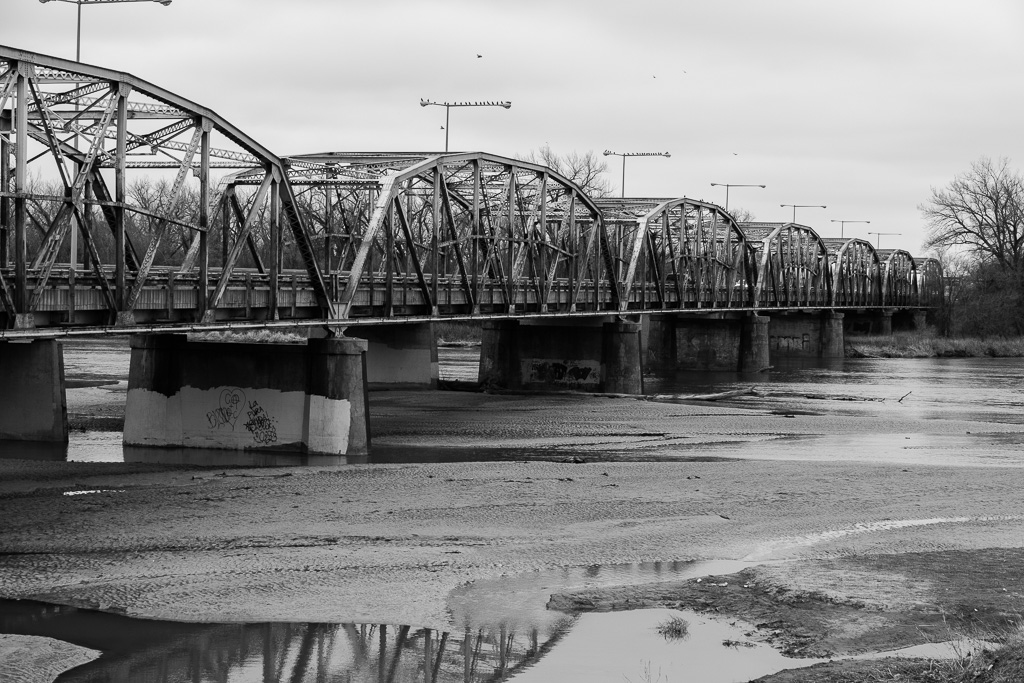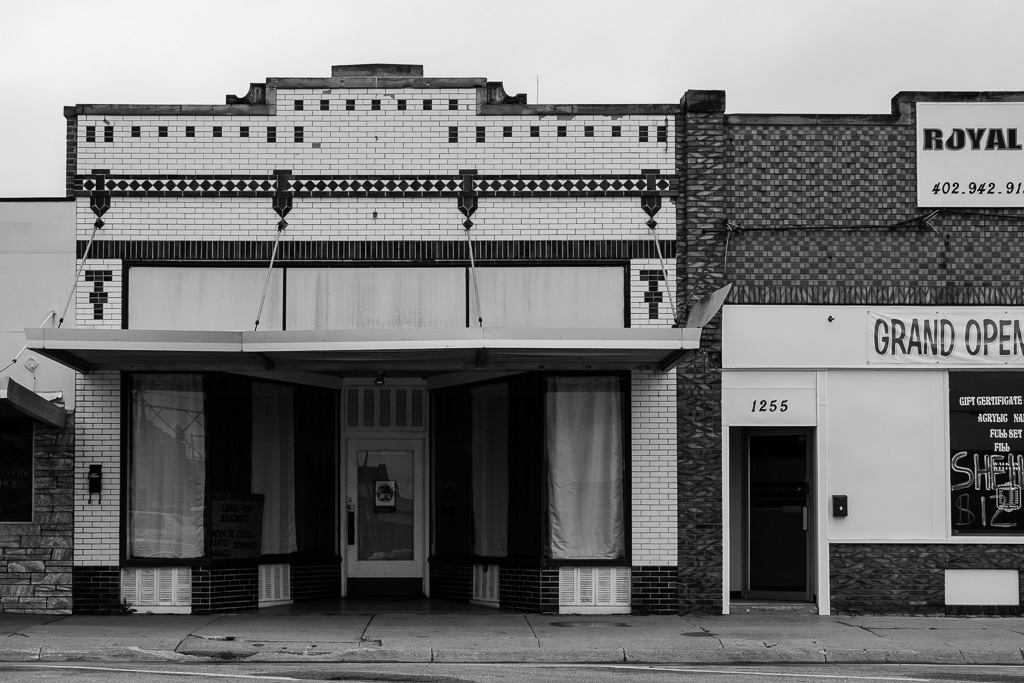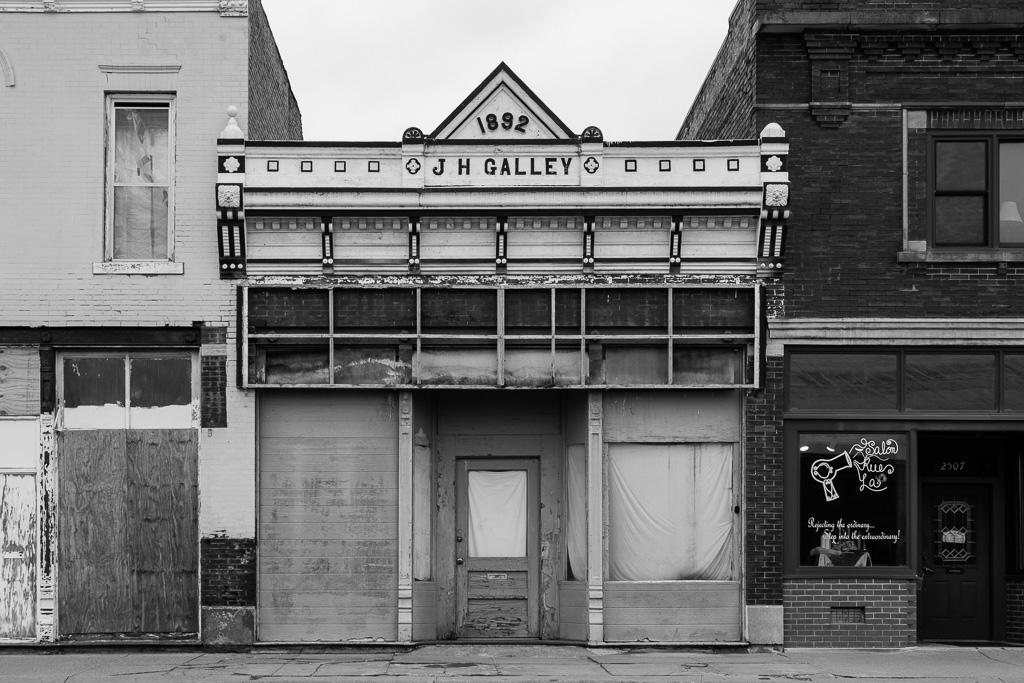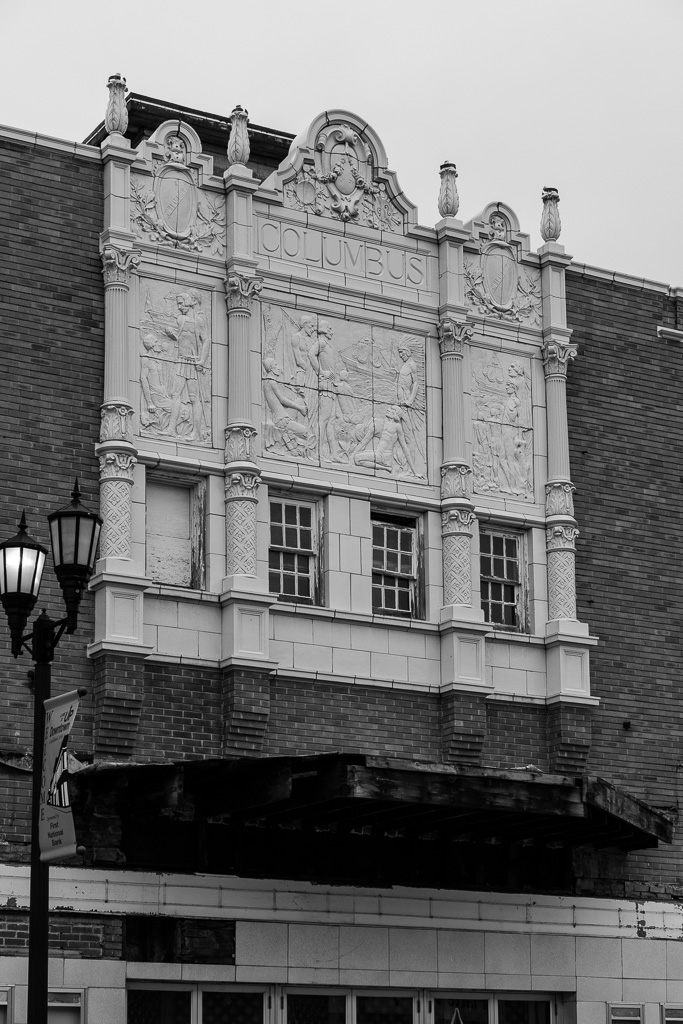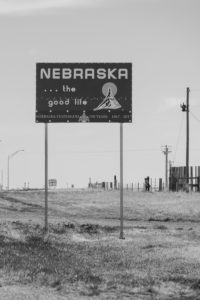 Nebraska …the good life. That’s what the sign at the state line says. As I drove through rural Nebraska along the former Lincoln Highway (and off the interstate), it didn’t seem like a very good life along Nebraska’s fading main streets. In fact, it looked pretty devastated. I was wholly unprepared for what I saw as I drove the little towns dotting the landscape along the path of the old Lincoln Highway in Nebraska.
Nebraska …the good life. That’s what the sign at the state line says. As I drove through rural Nebraska along the former Lincoln Highway (and off the interstate), it didn’t seem like a very good life along Nebraska’s fading main streets. In fact, it looked pretty devastated. I was wholly unprepared for what I saw as I drove the little towns dotting the landscape along the path of the old Lincoln Highway in Nebraska.
I was back on Route 66 in a way. Oklahoma in the northern Plains. As in Oklahoma, I was able to get off the interstate and get on the surviving old highway and pass through town on its main street. One has to get off the interstate. It can be a different world.
Whatever the dictionary entry for “over-touristed” is, this drive is not in it. Almost devoid of tourism would be a more apt description. In cold late March weather, I had it pretty much to myself a lot of times.
Some of the places were down-and-out; others (as in northeastern Oklahoma) were out-and-out.
With a few exceptions I had to wait for Iowa to see those quintessentially American small town main streets and family farms with the red barns, although some of the smaller towns in Iowa seemed challenged, too. There were a few PAW (punching-above-weight) places along the way in Nebraska, but they are not in this post.
Bushnell and Kimball were the first towns I saw in Nebraska. Unpaved roads, abandoned buildings, trailers, closed businesses…with a few exceptions just about the whole main street in Kimball was shut down and boarded up.
This set takes us from Bushnell at the state line with Wyoming all the way to Columbus. 380 miles.
The rural depopulation of the Great Plains states is not a new phenomenon. It certainly wasn’t new to me on the drive. I had already seen it in the southern plains when I was on Route 66 driving in Kansas, Oklahoma and the Texas Panhandle. I did a set of photos in black and white of my drive through rural Oklahoma I called the “Grapes of Wrath” after Steinbeck’s novel. It is here.
This is the northern version.
On Route 66 I managed to get more people shots. Not so on the Lincoln through Nebraska…it just didn’t seem to happen. Opportunity didn’t present itself. There are more photos of people in the Oklahoma black and whites, and it makes a difference.
To a certain extent it seems I wound up unconsciously channeling the great American photographer Walker Evans in this set (although without the people which do so much for his photography – they bring his photos to life). I noticed that when I finally got home and was looking again at that classic of his work, “American Photographs”. It’s a conceit to compare what I do to his body of work, but I mention this because he has been a big influence.
The fact is that when photographers like Walker Evans and Robert Frank (in his seminal work, “The Americans”) were traveling the country, there were a lot more people out and about. One pulled up at a living, breathing main street.
There’s a lot written on the rural depopulation of the Great Plains (which are said to encompass the entirety of the states of Kansas, Nebraska, South Dakota and North Dakota, and parts of the states of Colorado, Montana, New Mexico, Oklahoma, Texas and Wyoming). I read that the rural Plains have lost a third of their population since 1920. In light of the statistics it’s no wonder I saw so many shuttered main streets and saw so few people out and about.
There are a lot of reasons cited for the decline in population.
The loss of rural jobs is said to be a core reason. The family farm is disappearing. Improvements in farming technology play a big role in that – the experts say that the mega-farms don’t create a lot of local jobs or contribute significantly to merchants in the region. Regrettably, governmental programs over time have tended to help the mega-farms disproportionately. In essence, the US government (i.e. the American taxpayers) has been subsidizing the growth of these mega-farms and the production of agriculture commodities on them (e.g. corn for biofuels – 40% of US corn production according to what I have read) to the detriment of the family farmer. (I’ll stop – I try to keep politics out of these posts.)
Other factors include remote and unprofitable factories in the urban areas together with the difficulty in attracting modern industry to the region, the huge drop in the birth rate (some call it a “reverse baby boom”) along with the out-migration (which tends to include more younger people seeking better opportunity elsewhere), and an overall loss of optimism and hope that comes with all of these challenges.
John Steinbeck wrote vividly in “Grapes of Wrath” about the exodus from the southern Great Plains during the dust bowl years. The “rural flight” has continued since then both in the southern and northern Great Plains. Bottom line: the countryside in the Great Plains states is very under-populated. We are witnessing a slow and steady demographic collapse in the rural counties in states like Nebraska.
There is ongoing discussion of returning drier parts to native prairie land as the landscape empties. Read more here. Bison herds can be seen again as the bison is returned to the land. See this site.
The larger cities have not been spared either. North Platte, Grand Island and Columbus were the three bigger Lincoln Highway cities where I stopped, and they are challenged. The first really thriving cities I saw in Nebraska weren’t until I got to Lincoln and Omaha. Lincoln is only about 65 miles due west from the Mississippi (and Iowa) and Omaha right at the river just across from Iowa – all the way at the other end of the state.
This set is mostly about disappearing Main Street. With that goes the loss of a part of America. The stores, the gas stations, the banks and other businesses, the taverns, the clubs and organizations (VFW, American Legion, Elks…) and even the churches and schools slowly close as the jobs leave and the people, too. The arrival of the chains — the Wal-Marts, Dollar Stores, Burger Kings and Subways – massively impact Main Street as well. That’s something happening across the entire country but it is of course more pronounced in an economically precarious community already suffering significant population loss. There’s a name for this: it’s called “the Wal-Mart effect”. I passed through many communities which had seemingly reached the tipping point: places without schools, stores or even government. Others hang in there (just barely).
I felt great sadness as I journeyed across Nebraska.
For a photographer there was almost unlimited material. I took a lot more of these. The photos in this set are just a glimpse.
[Postscript 9 Oct 2017. A friend sent me this link about an NPR report on a new book called “This Blessed Earth – A Year in the Life of an American Family Farm” by a Nebraska native, Ted Genoways. As is noted in the story, the author spent a year studying a family farm in sparsely-populated York County, NE, an hour outside Lincoln, and he writes about it in the book. Thank you, David H. Here is a link to the author’s site.]

